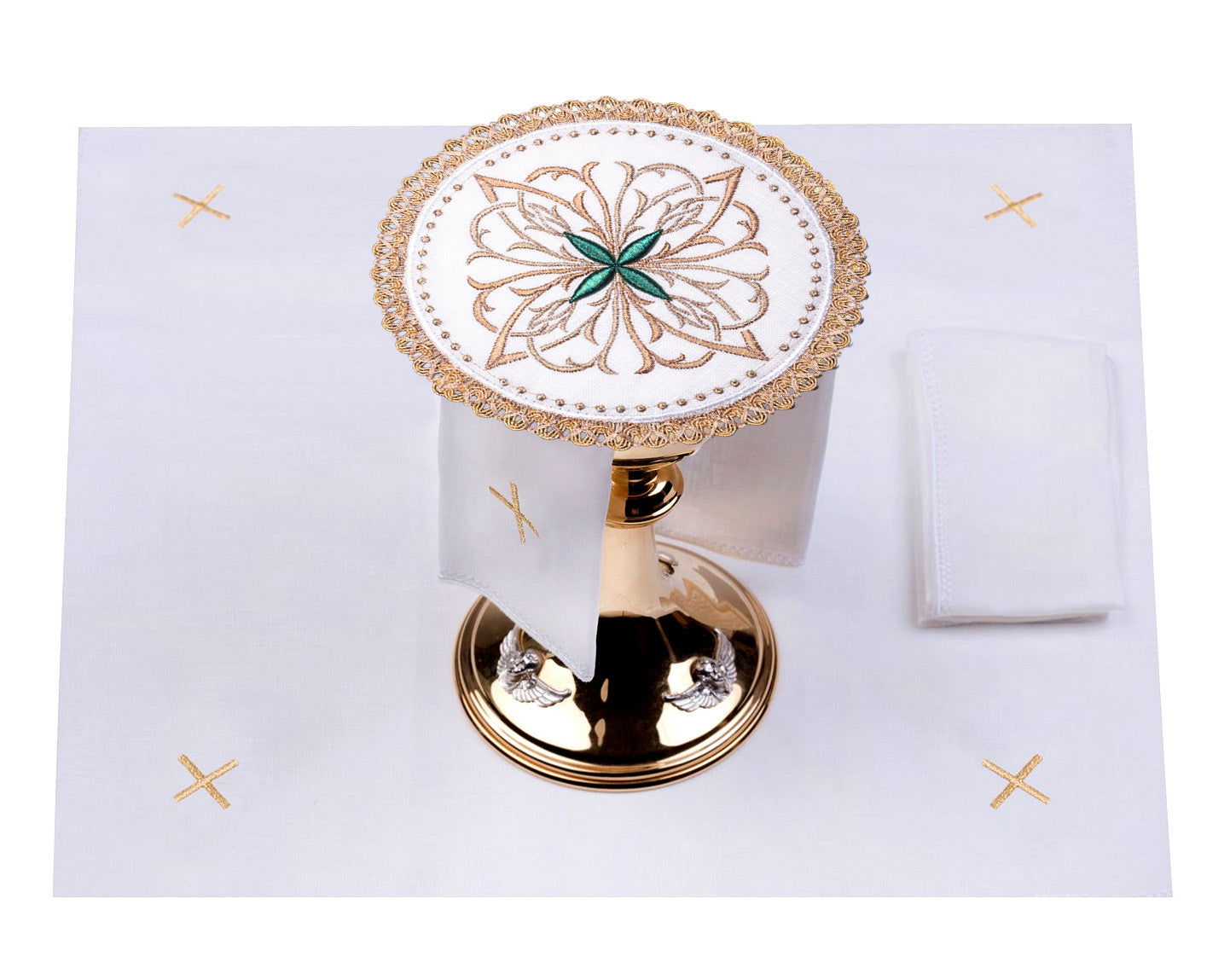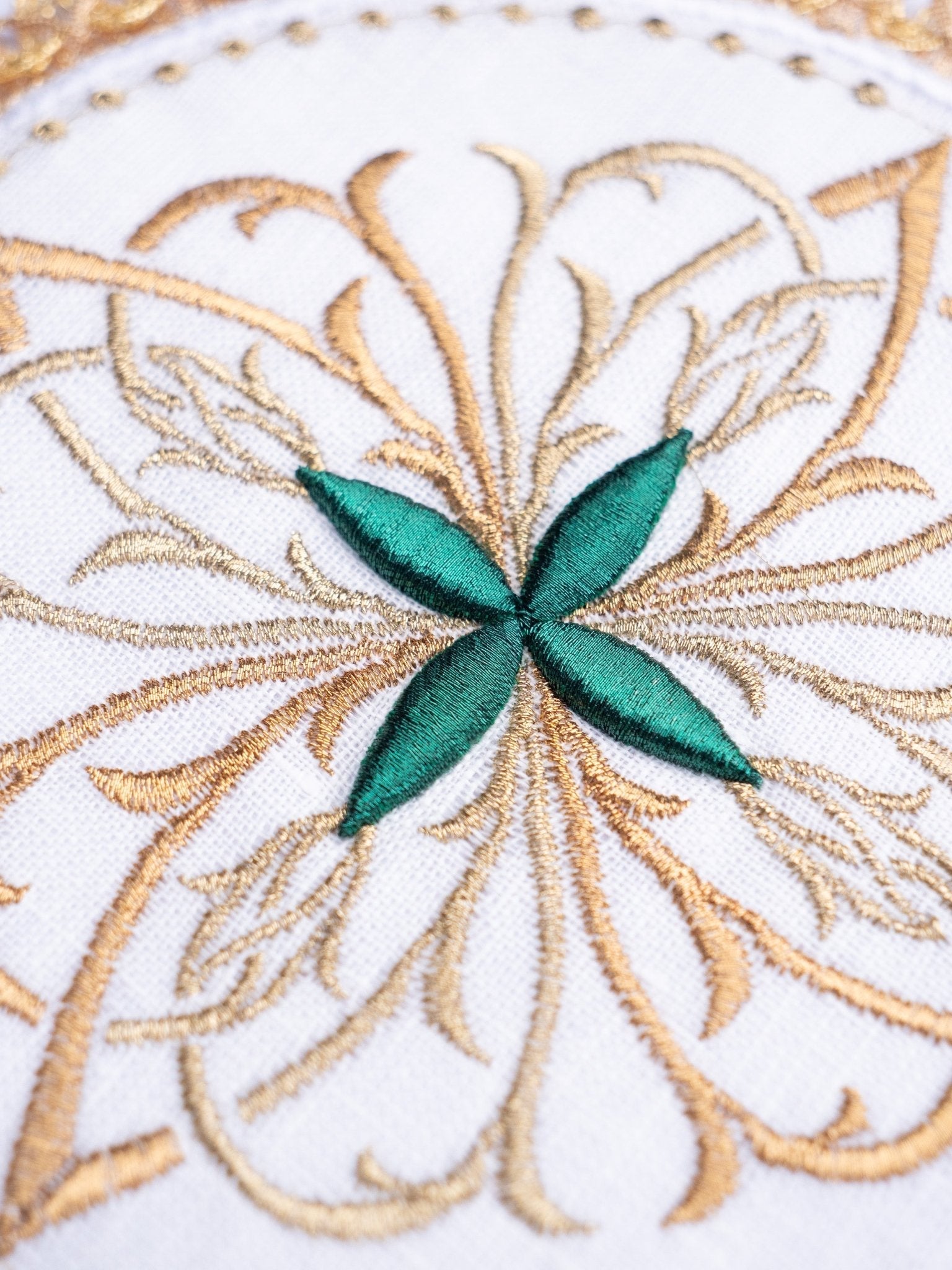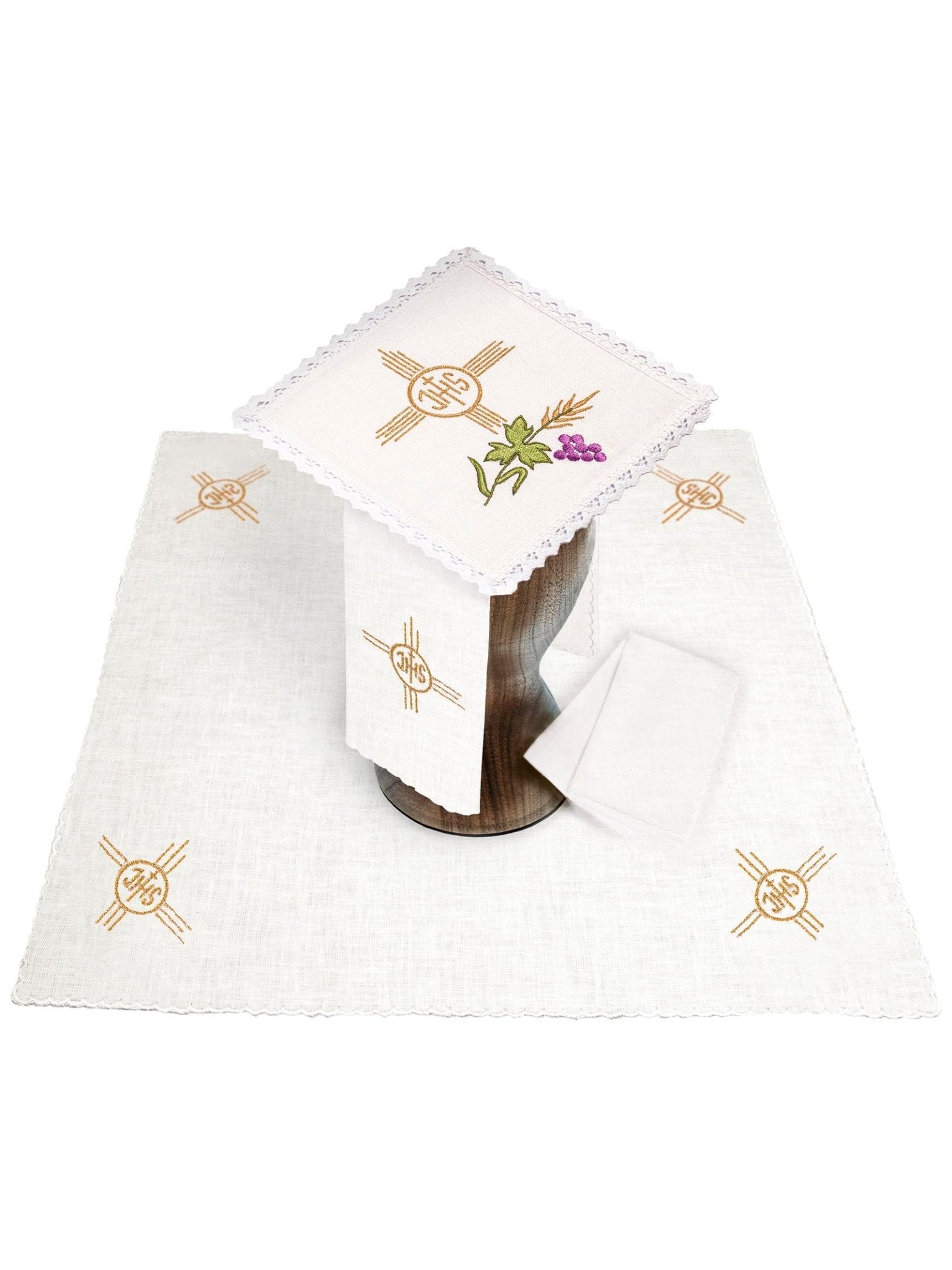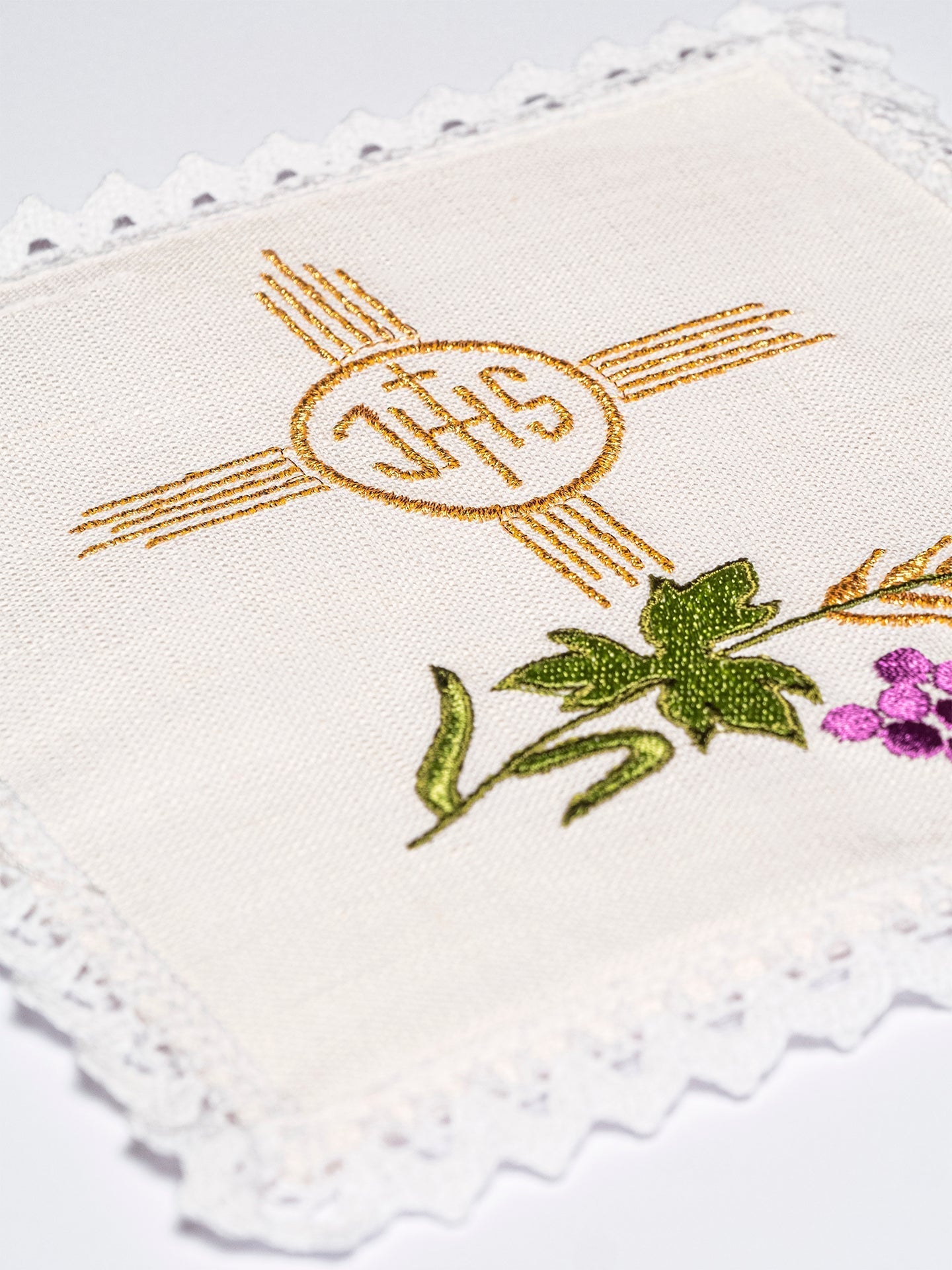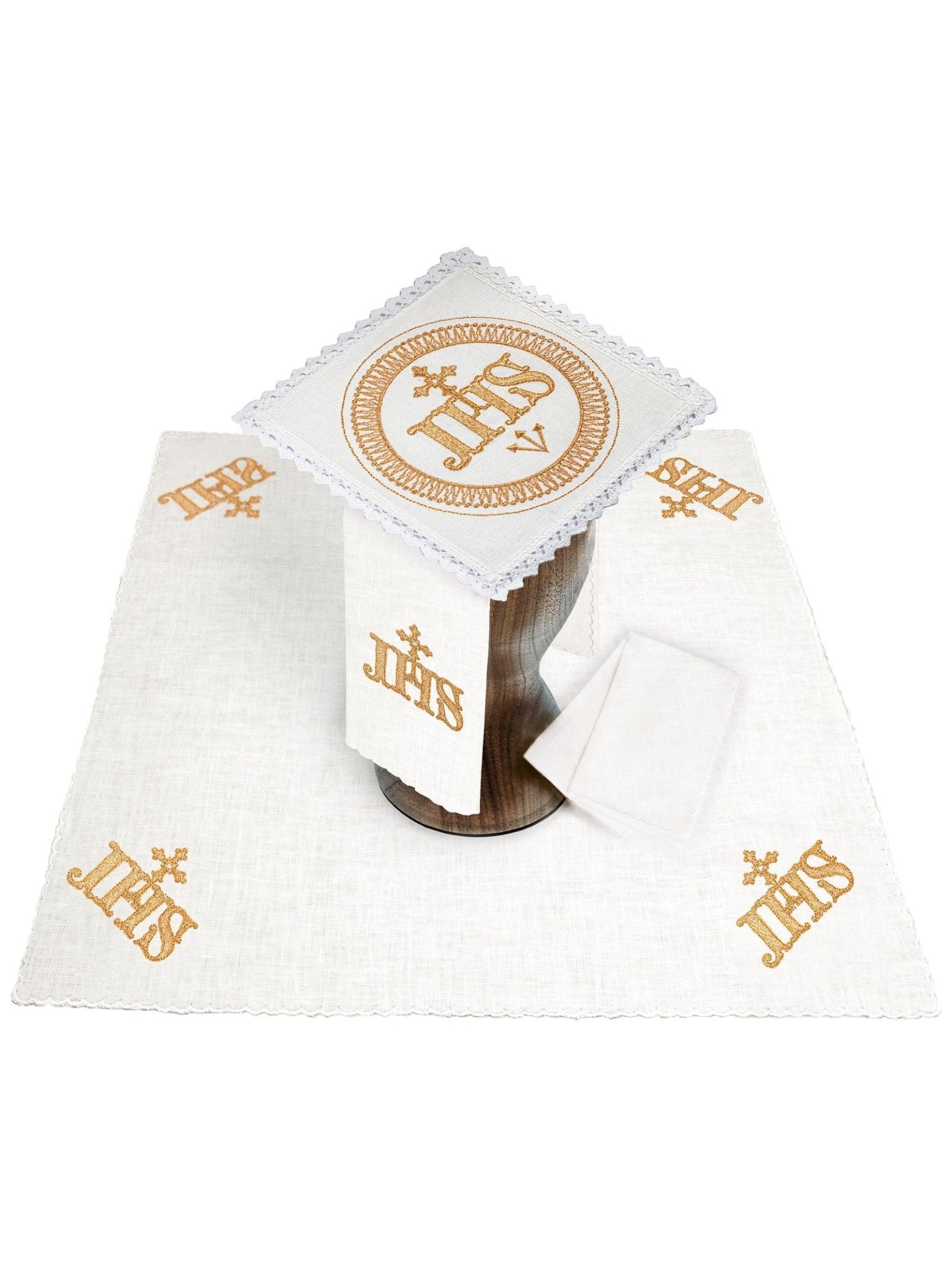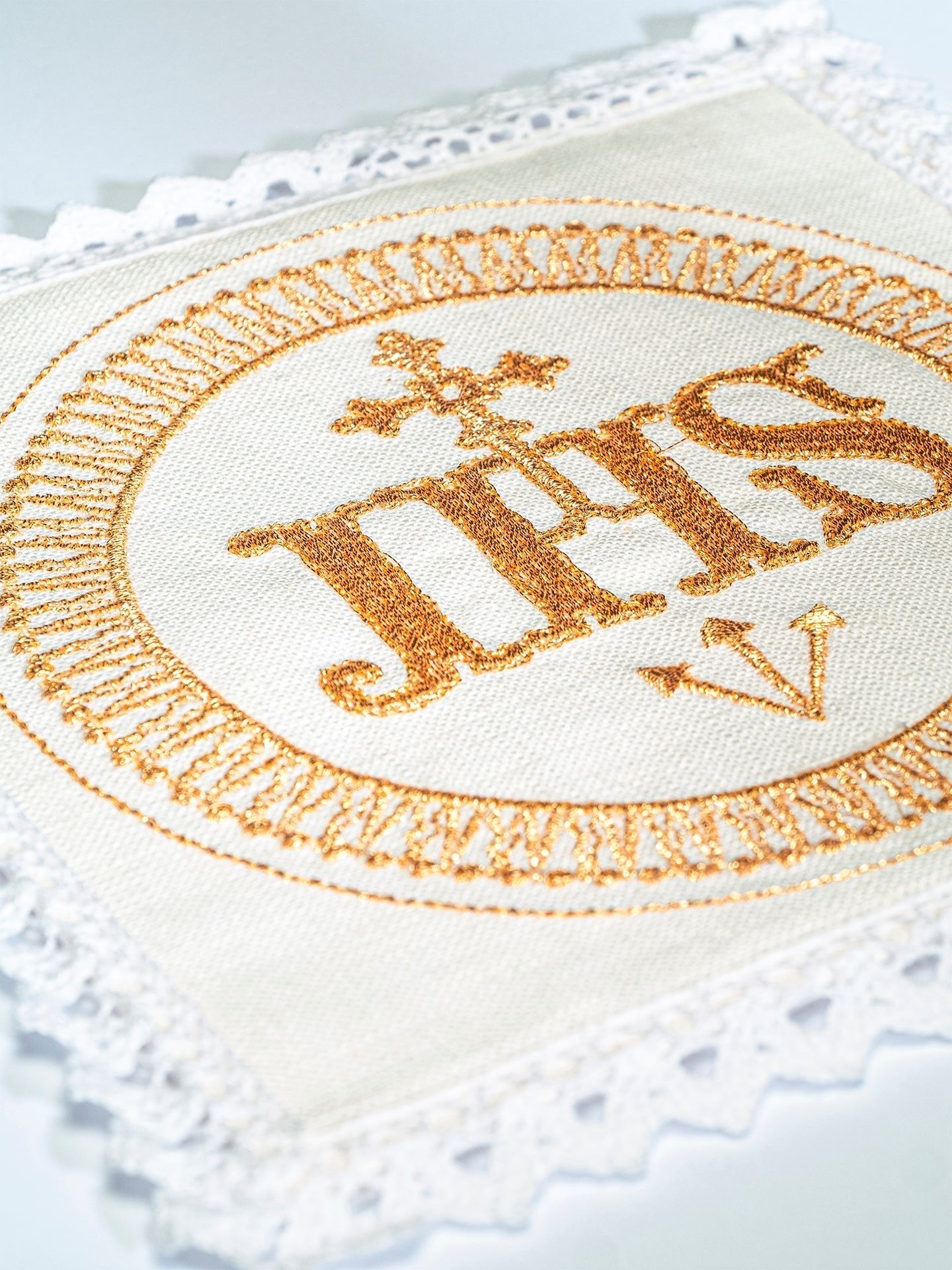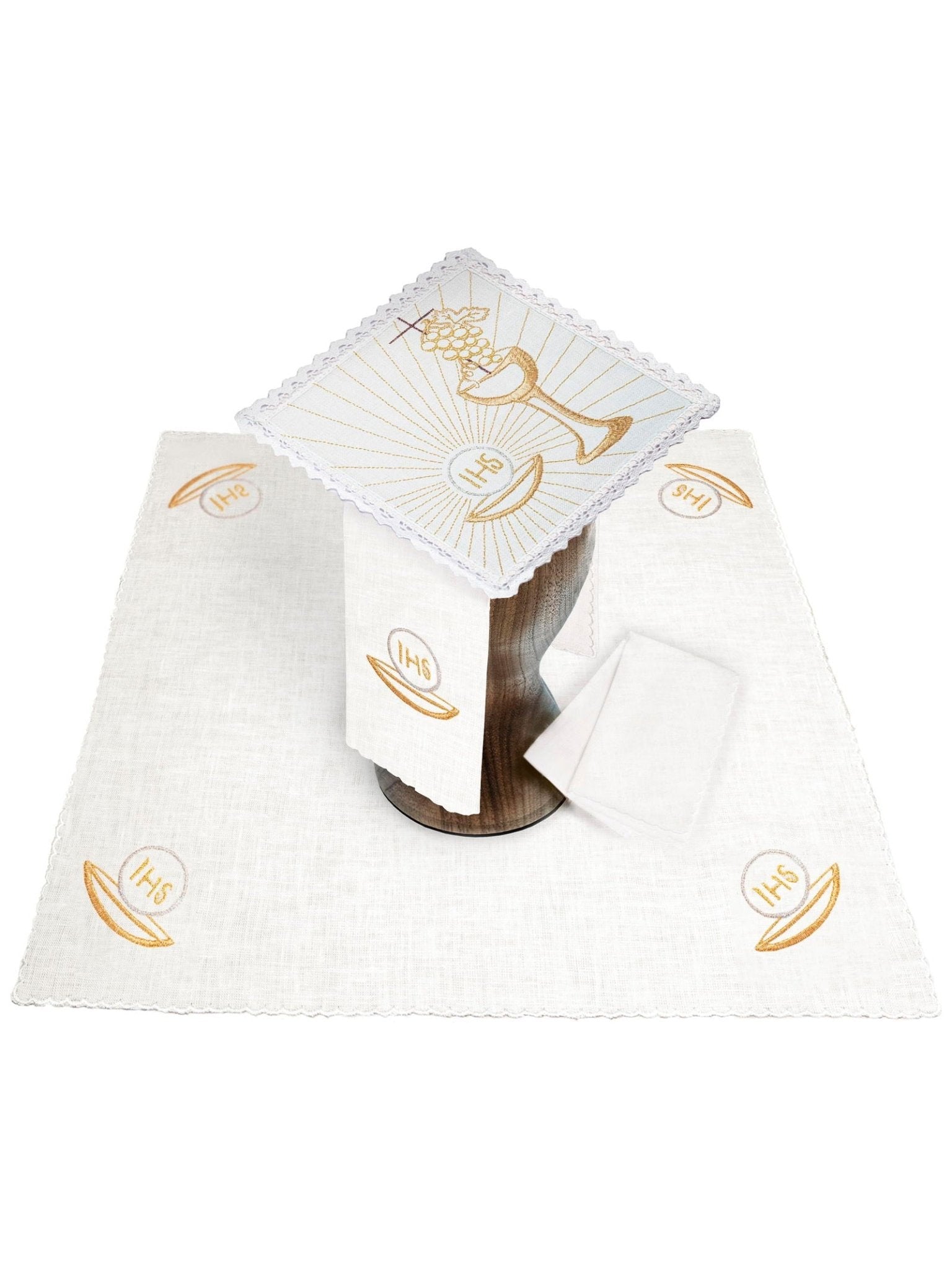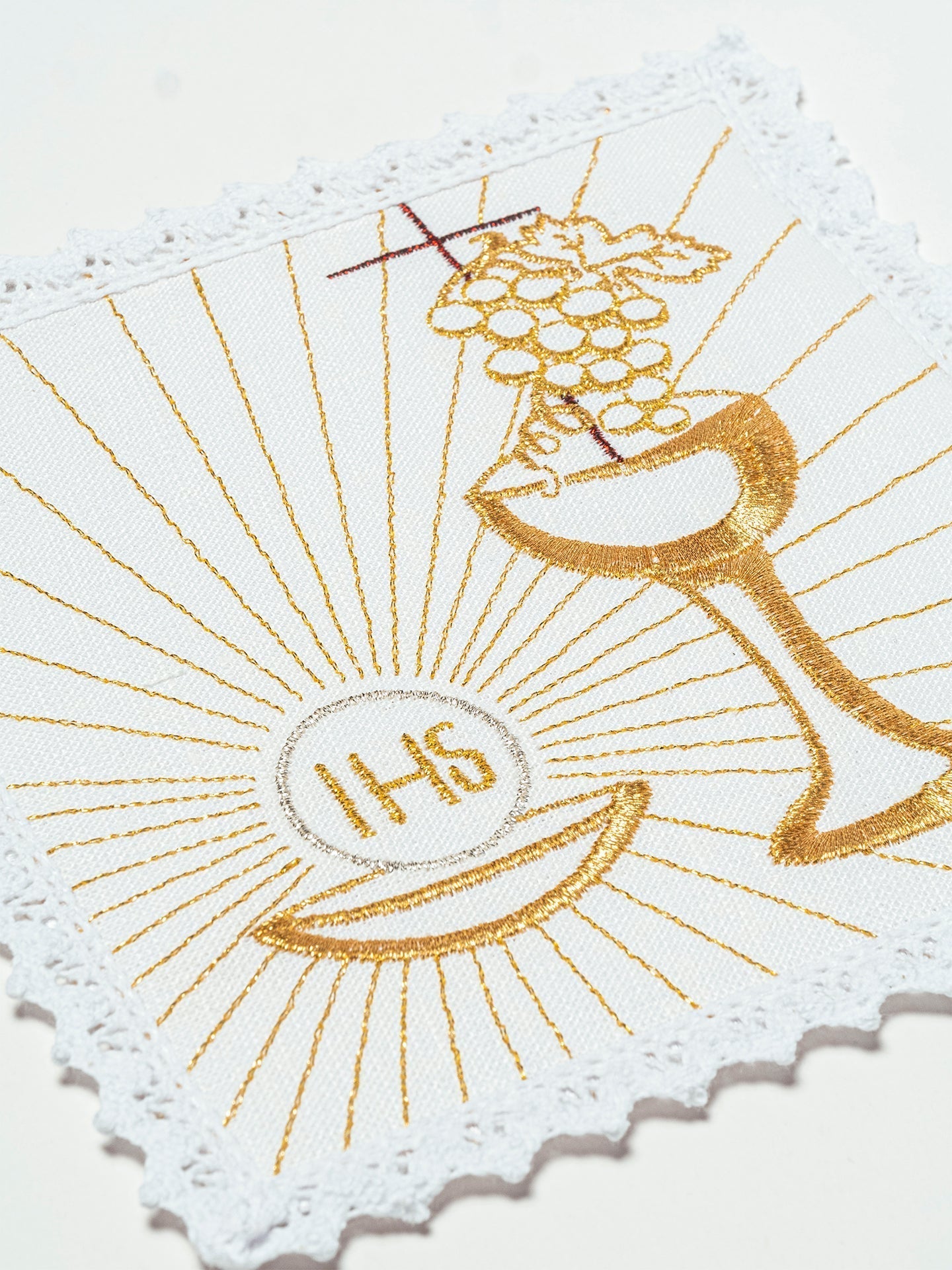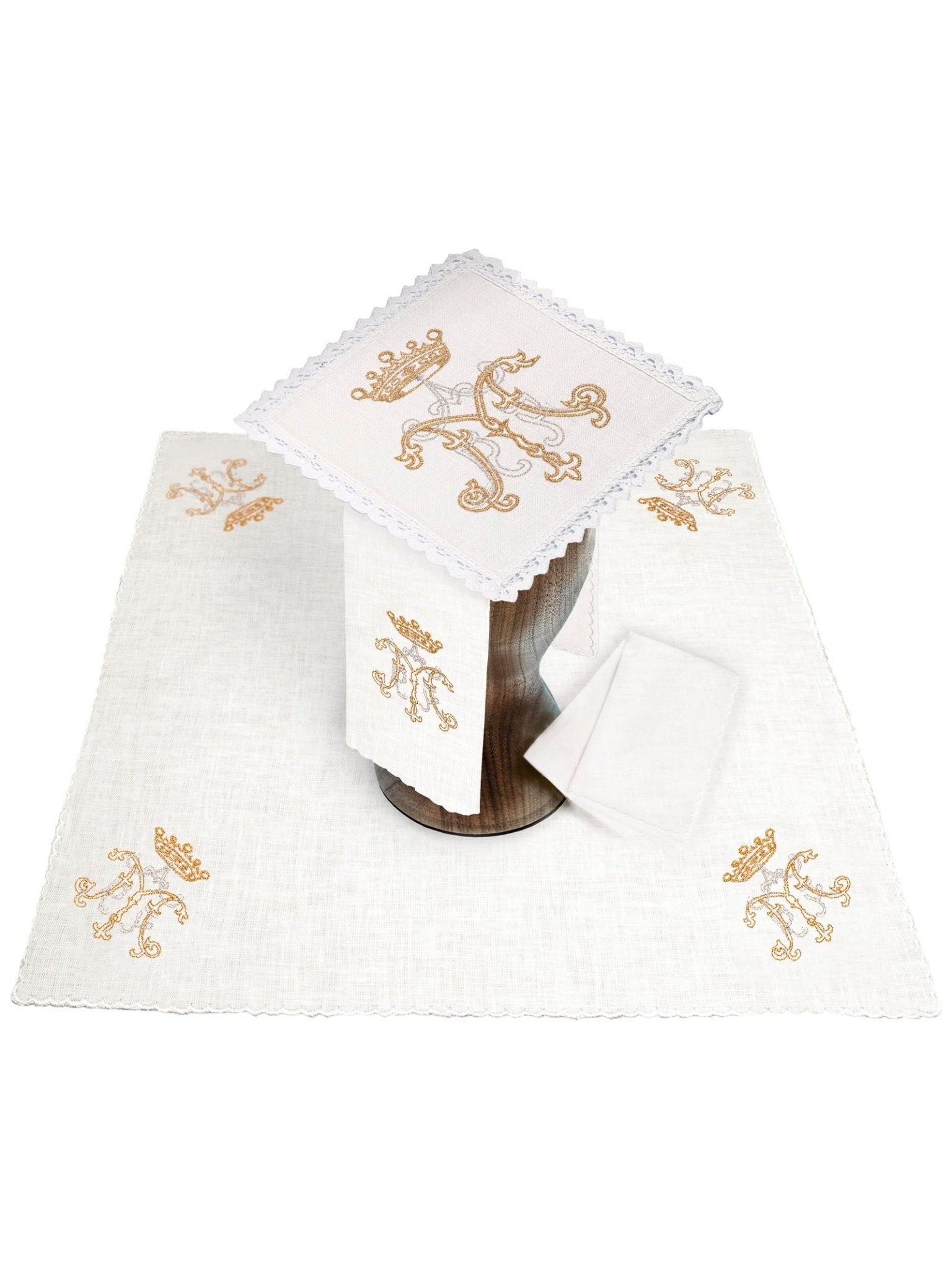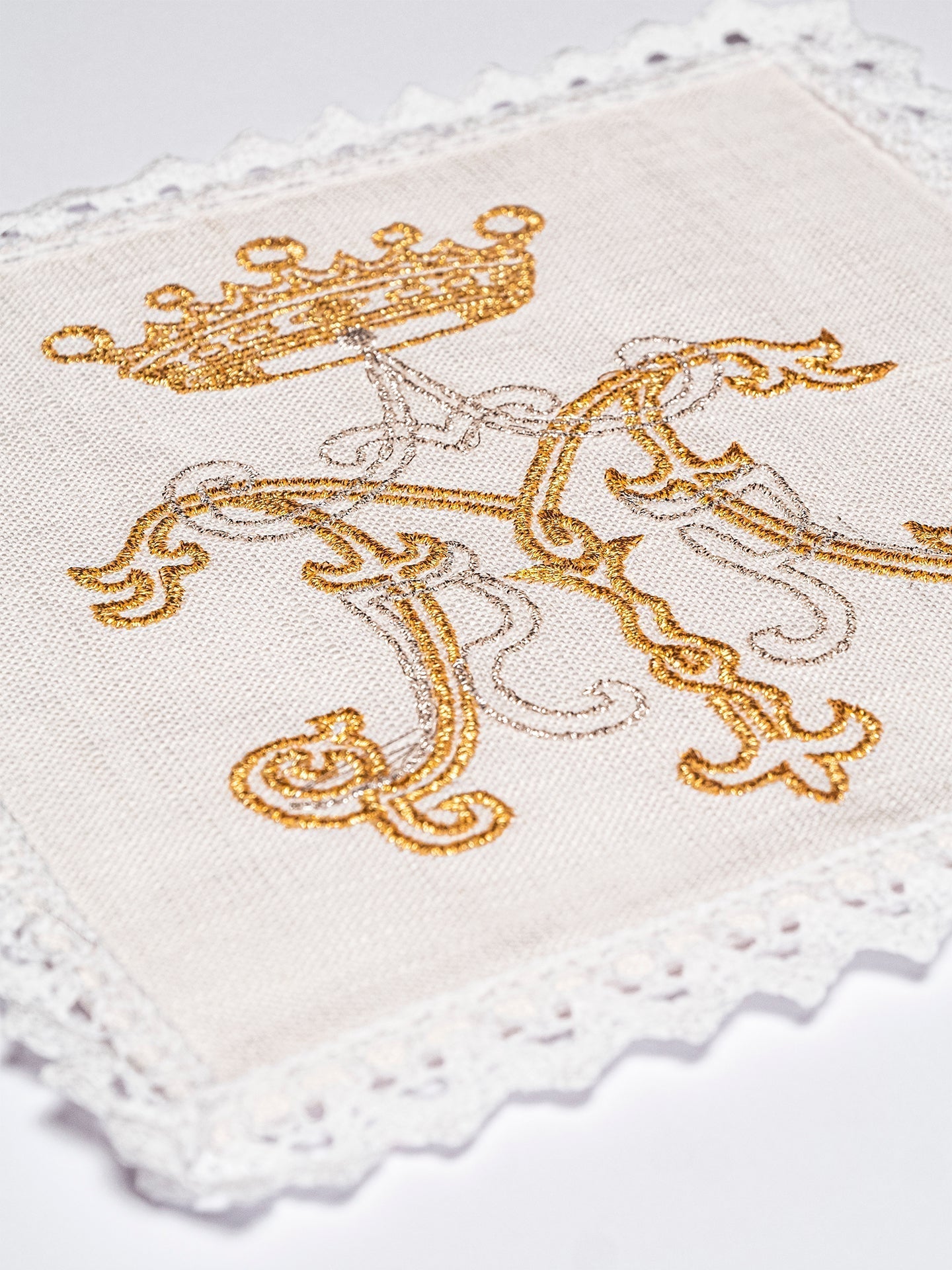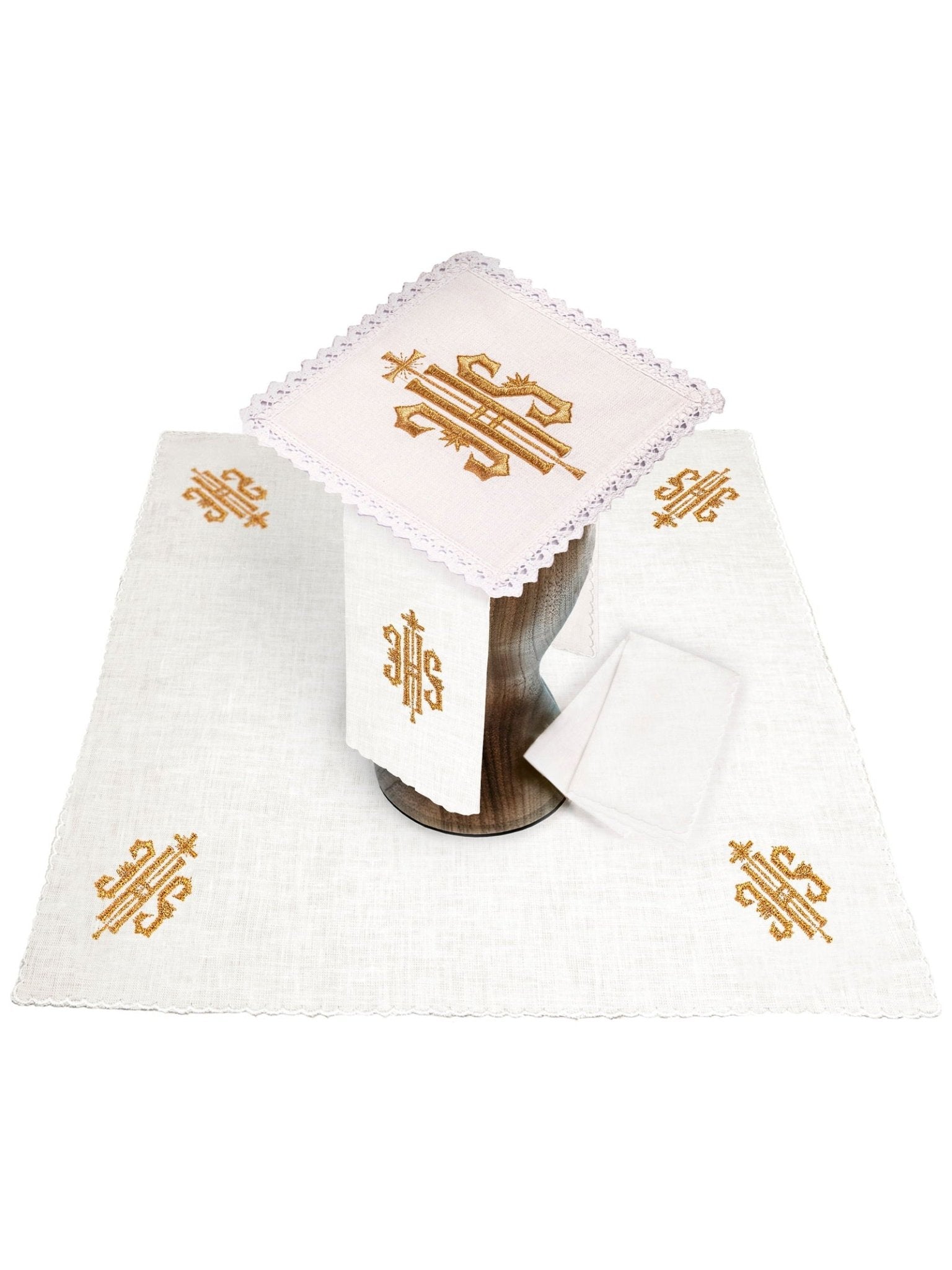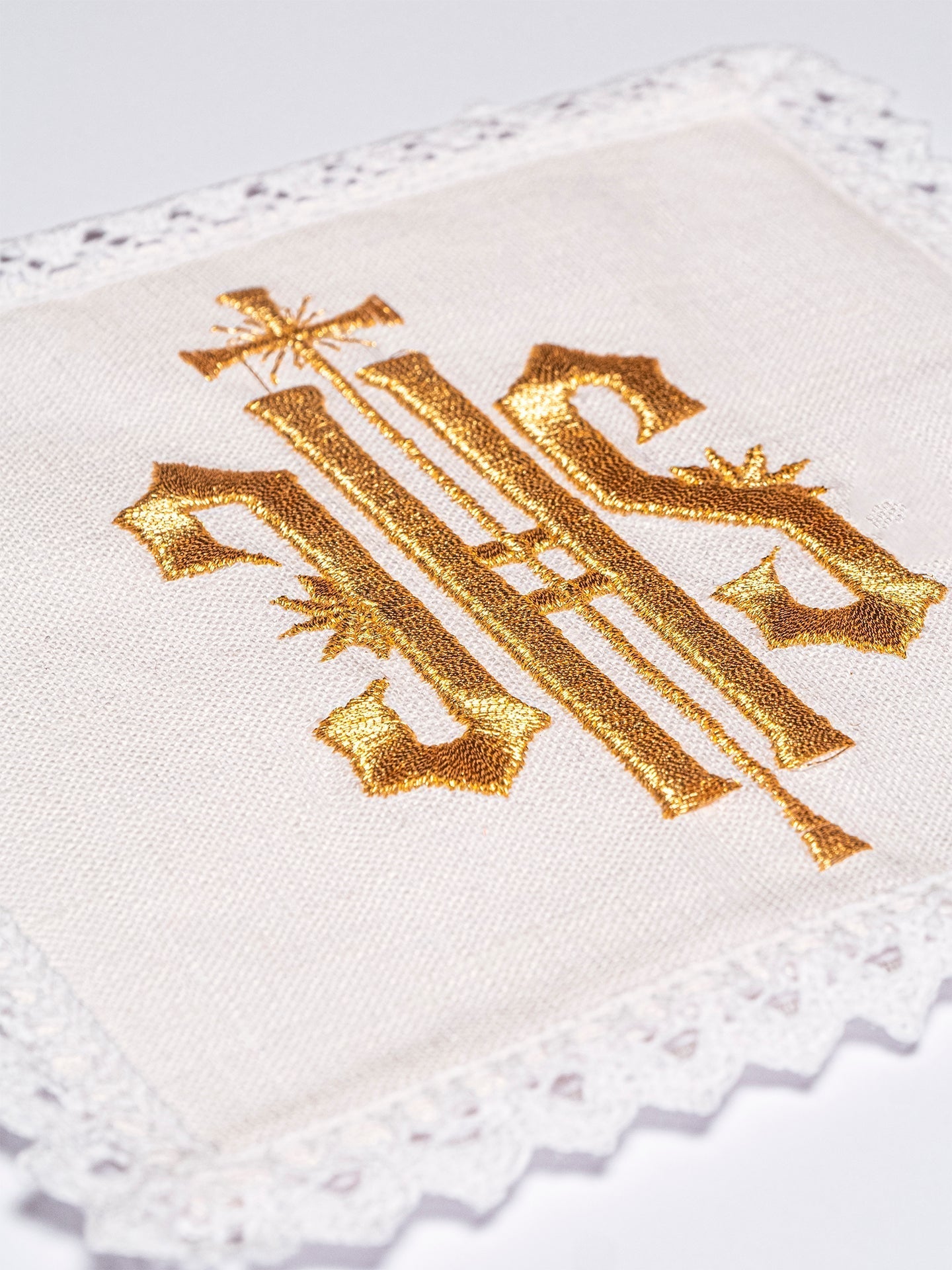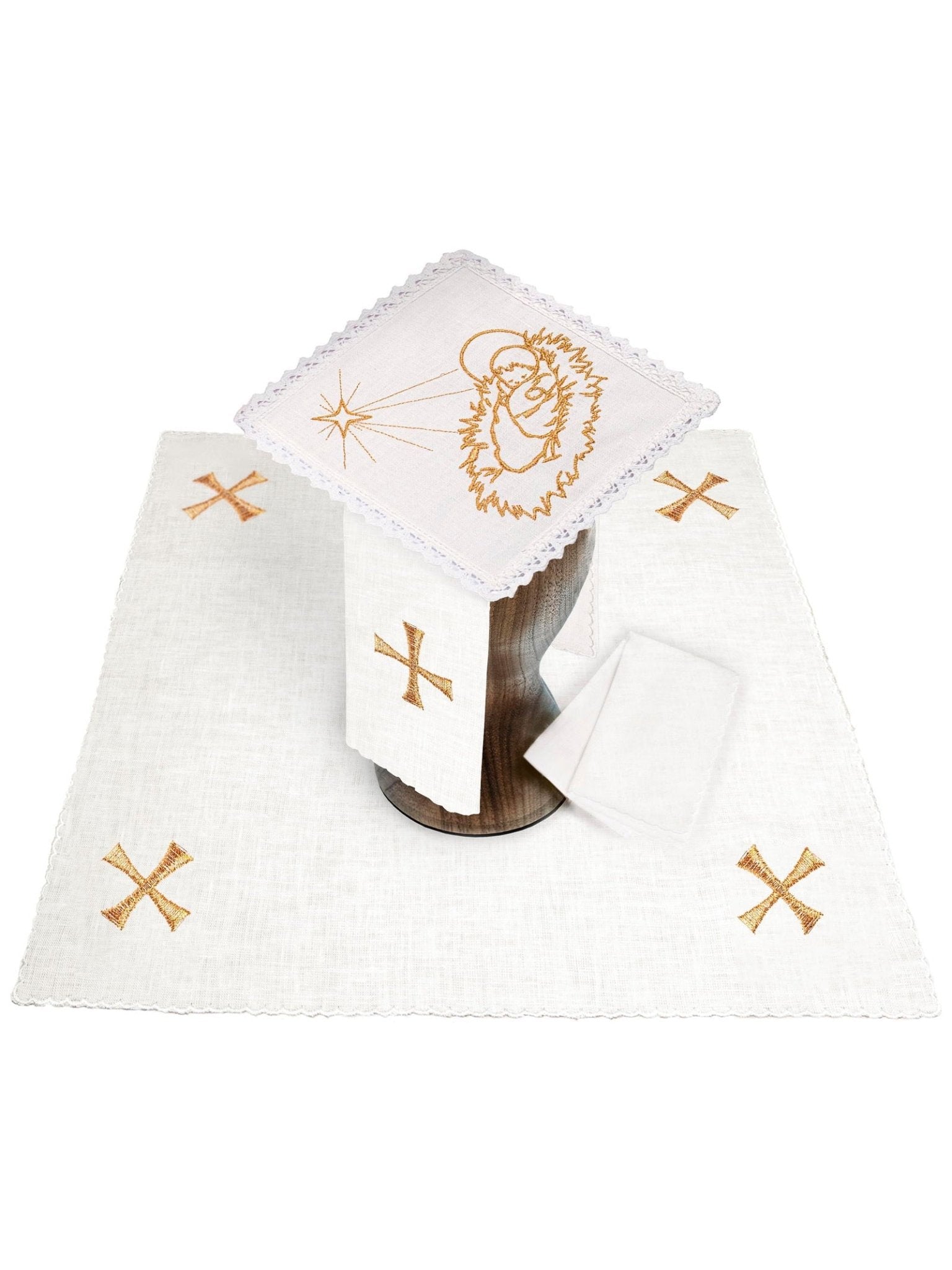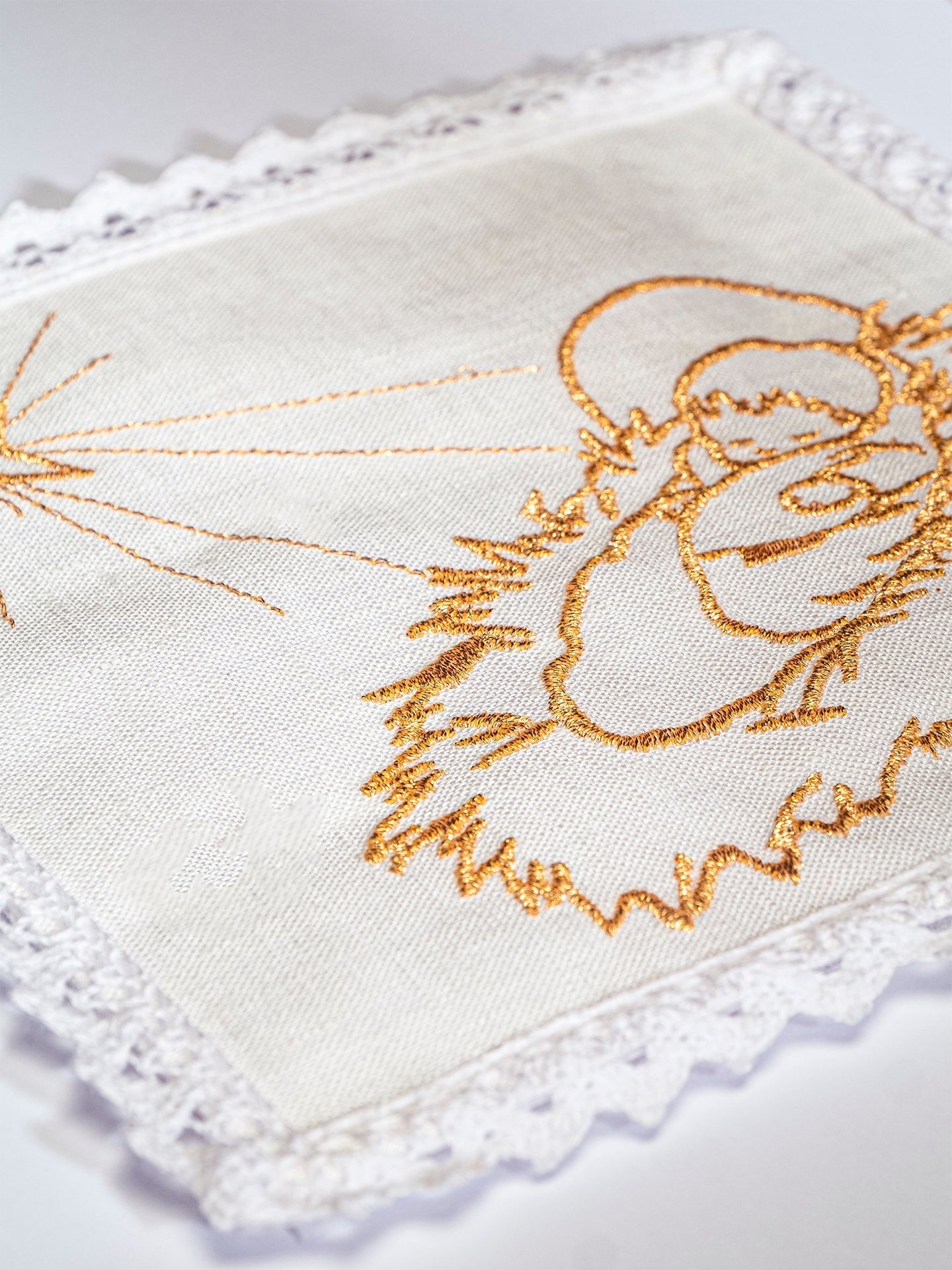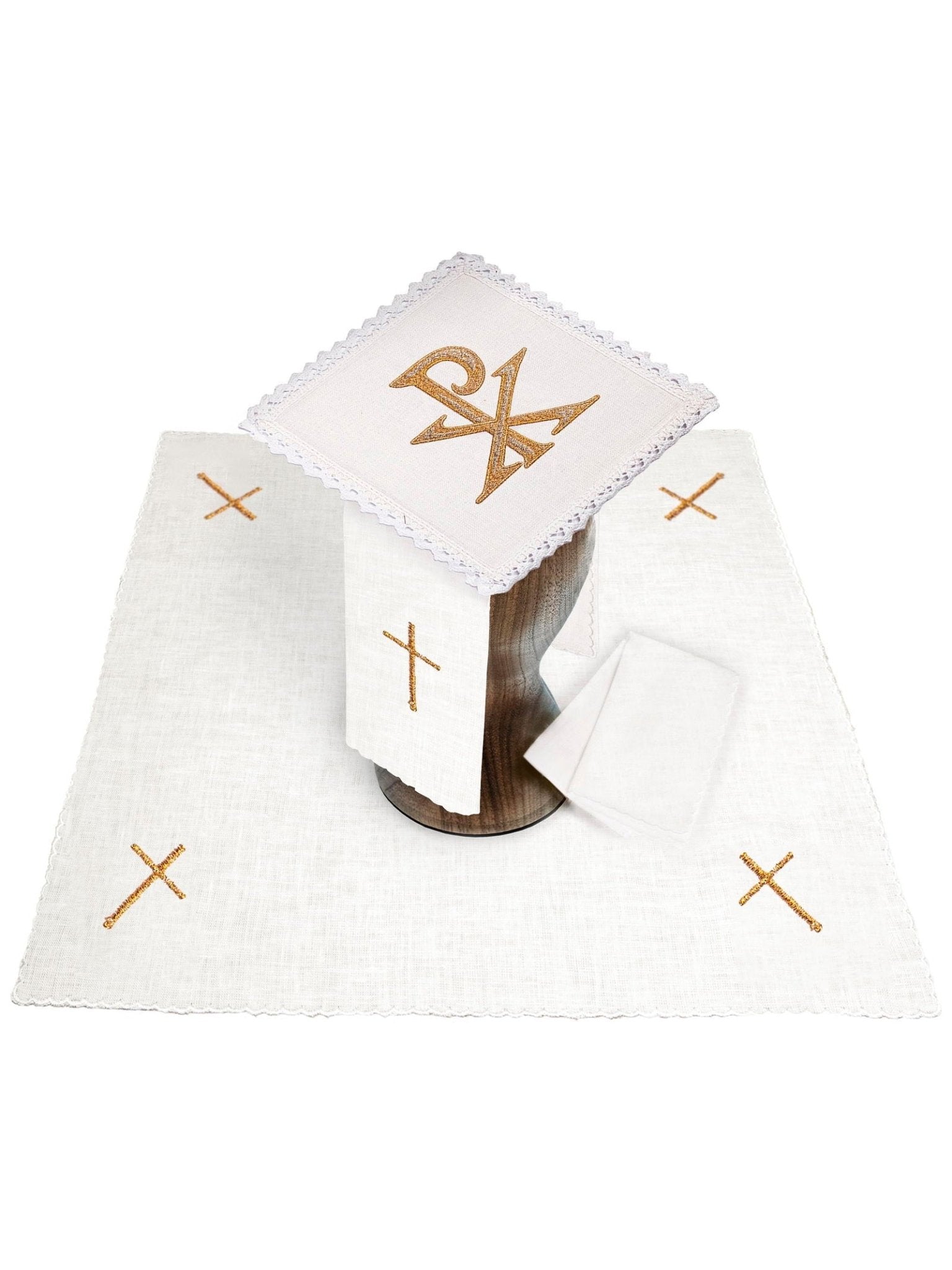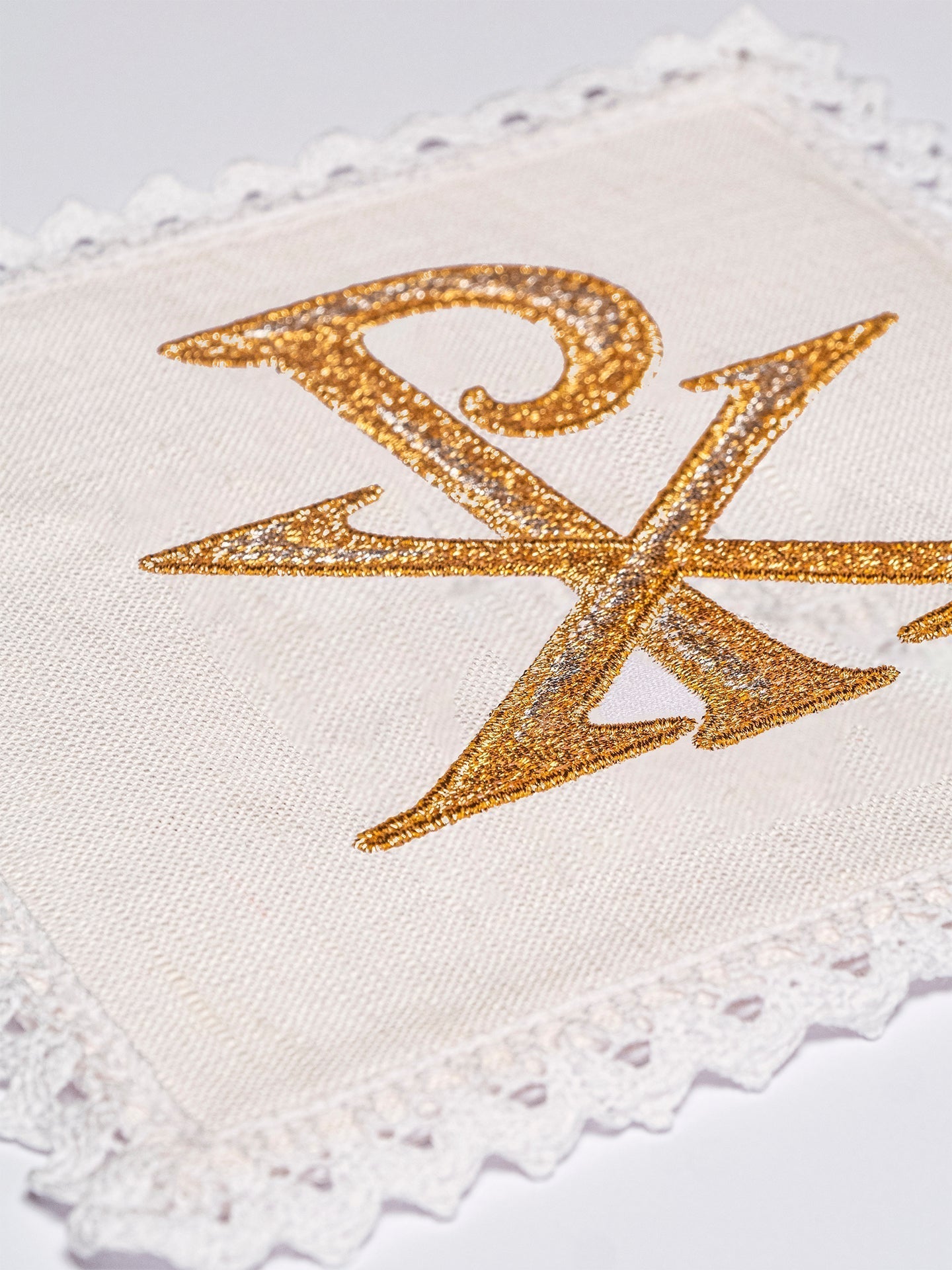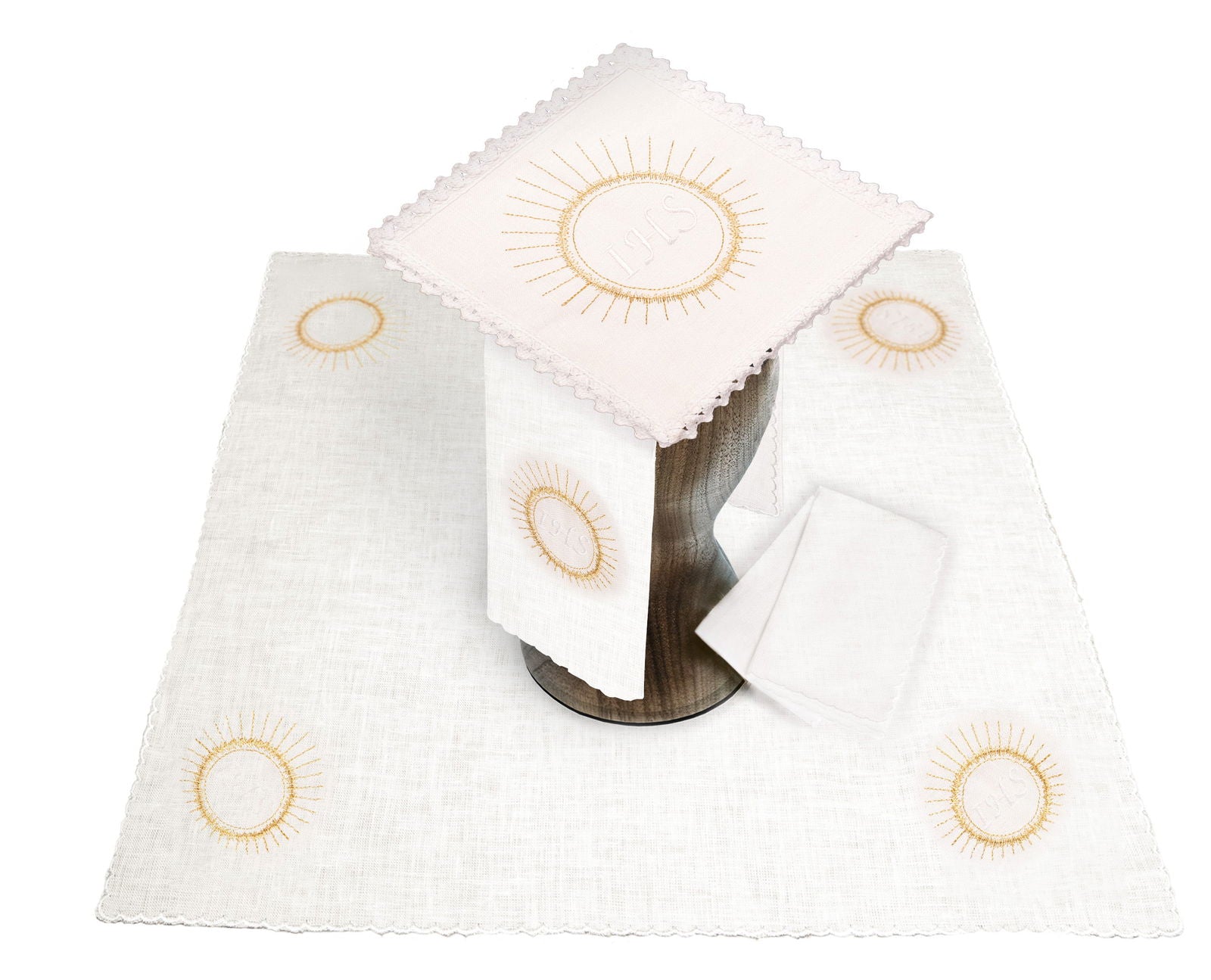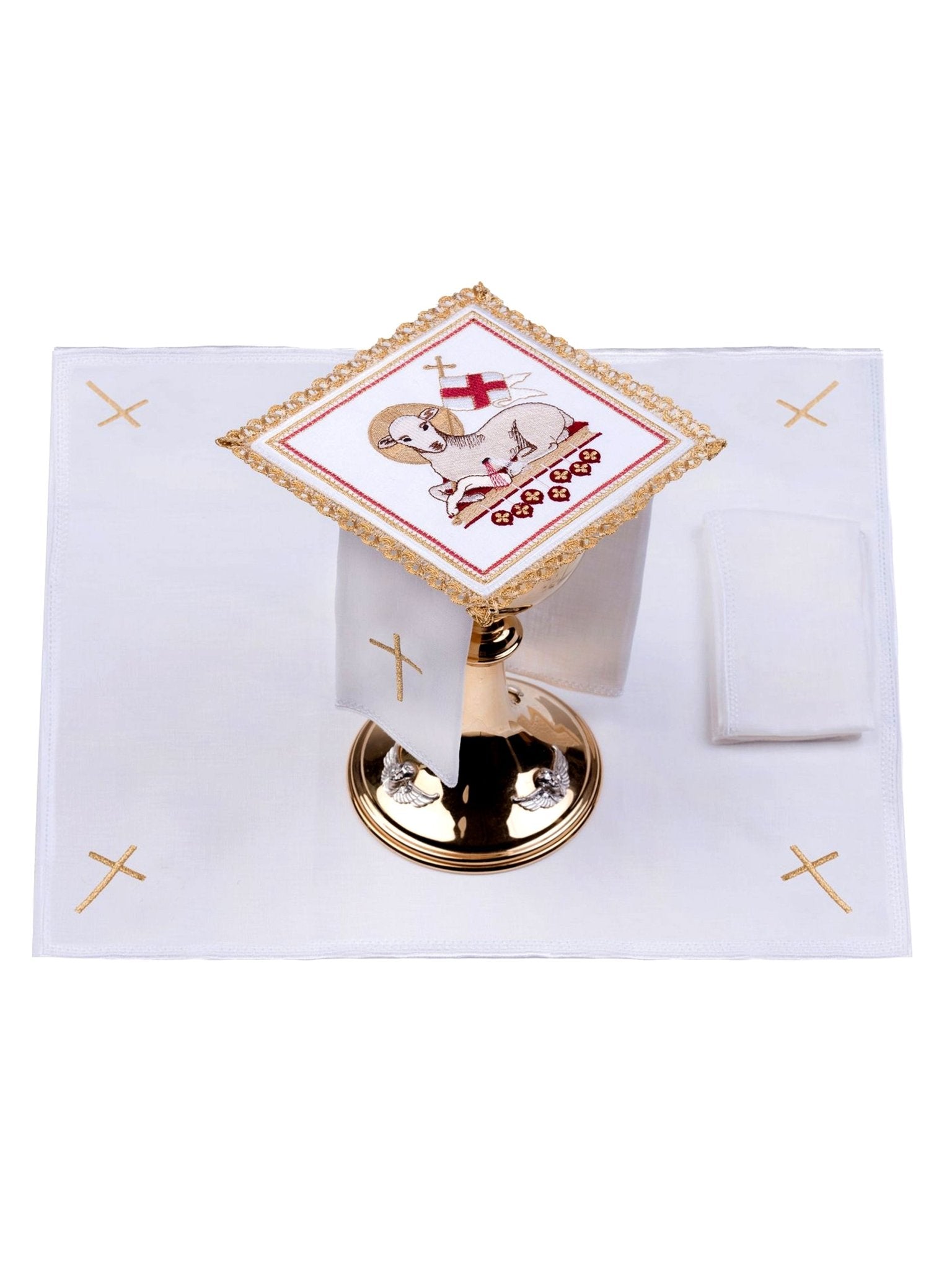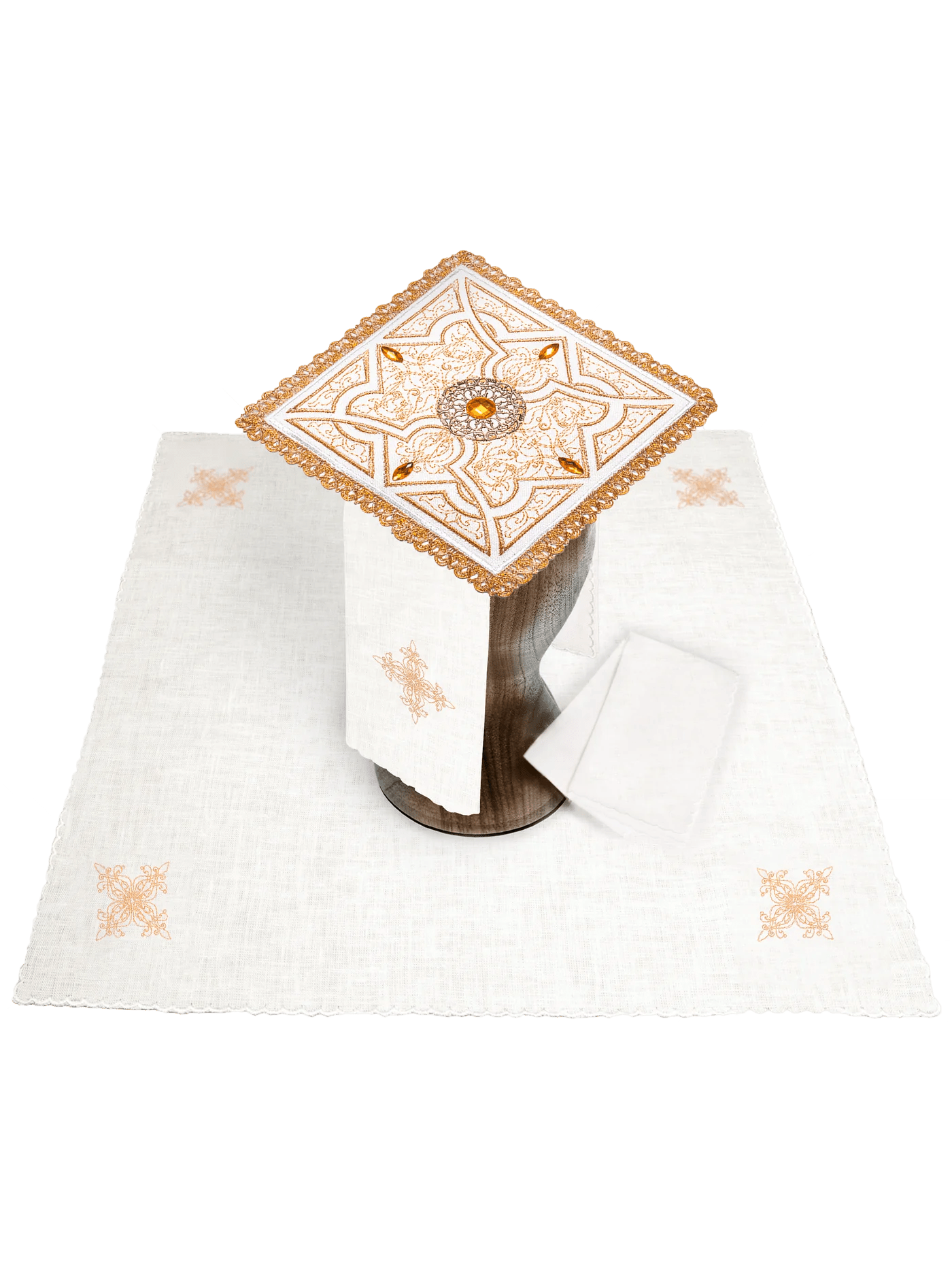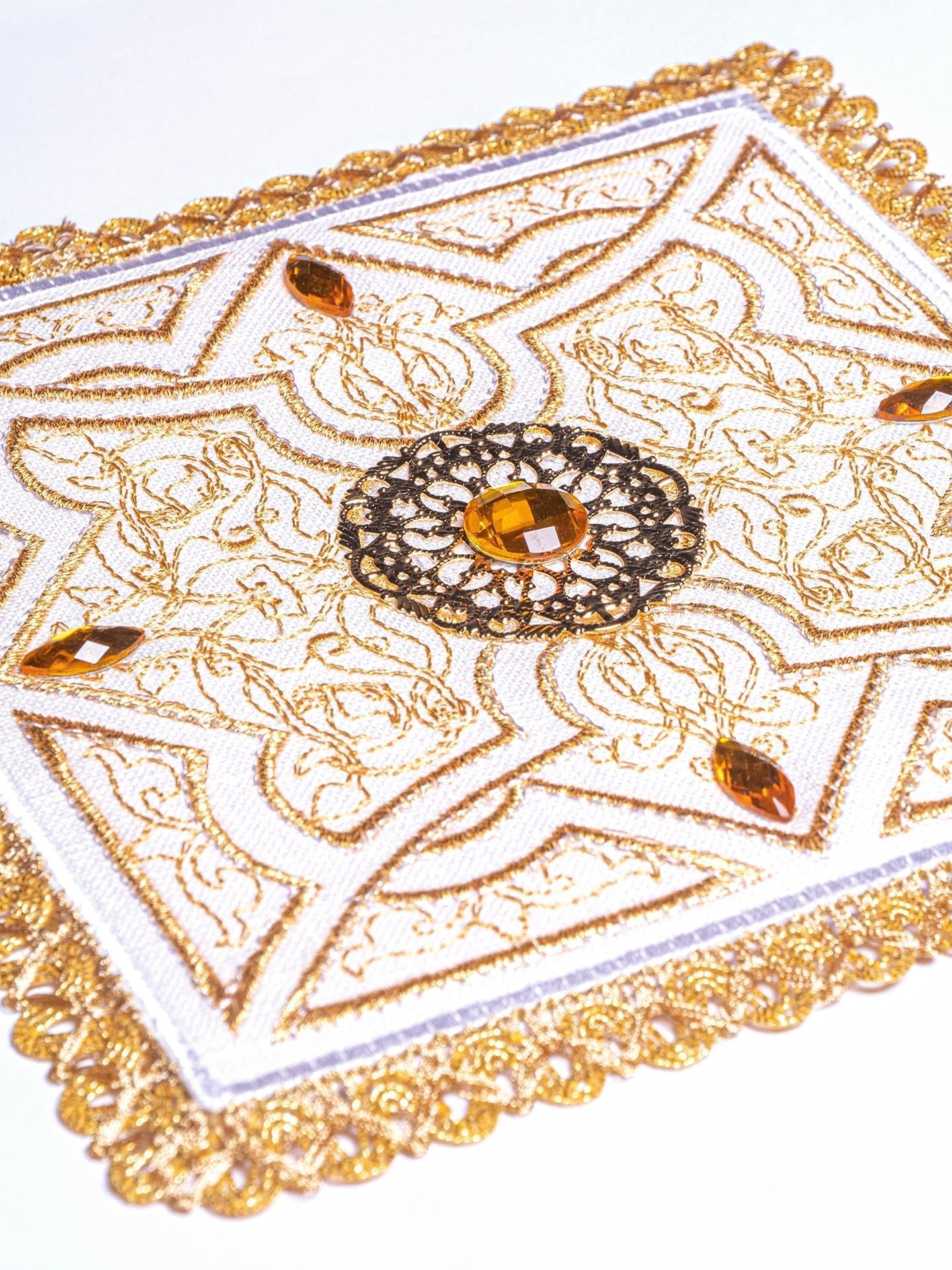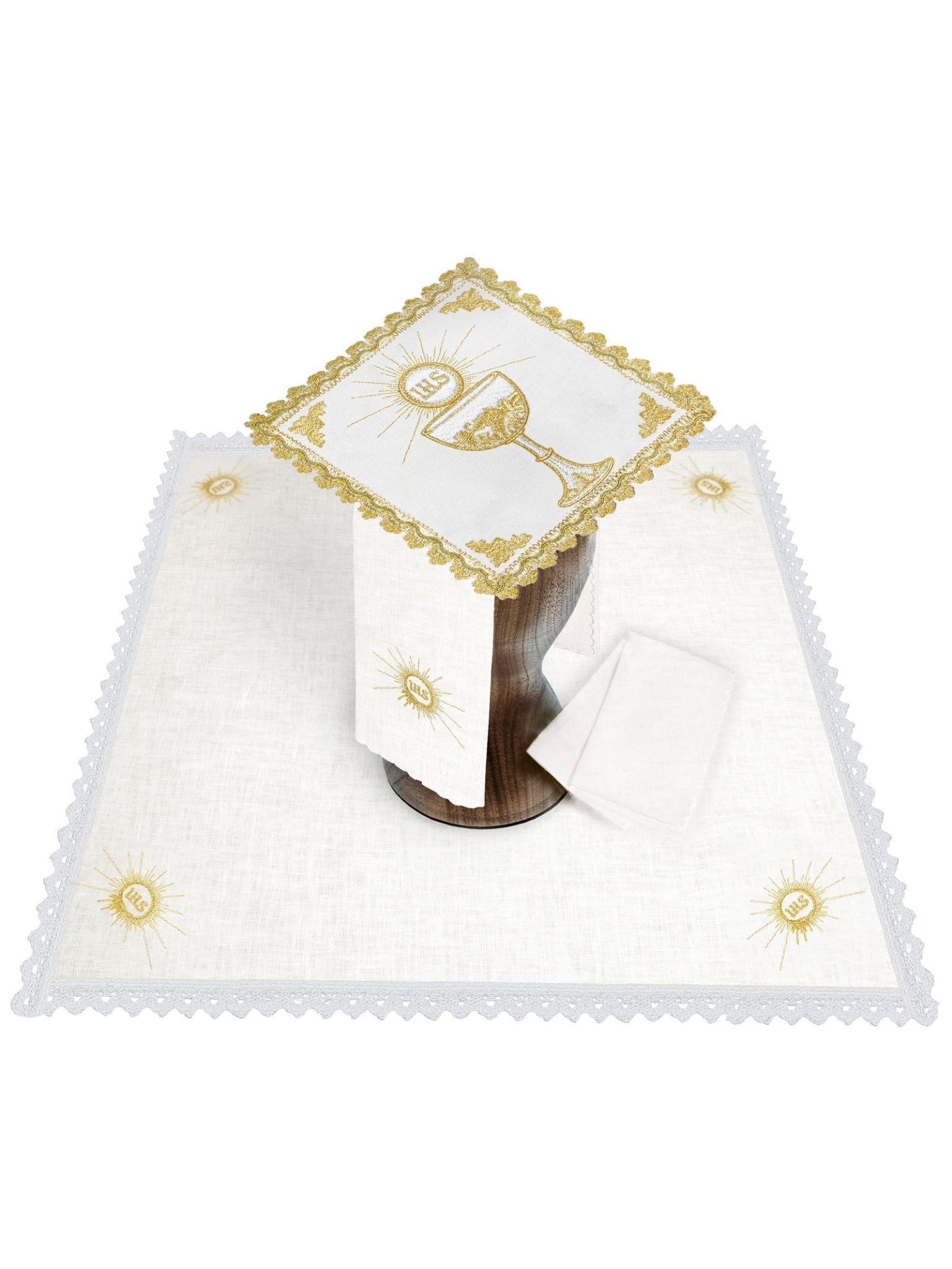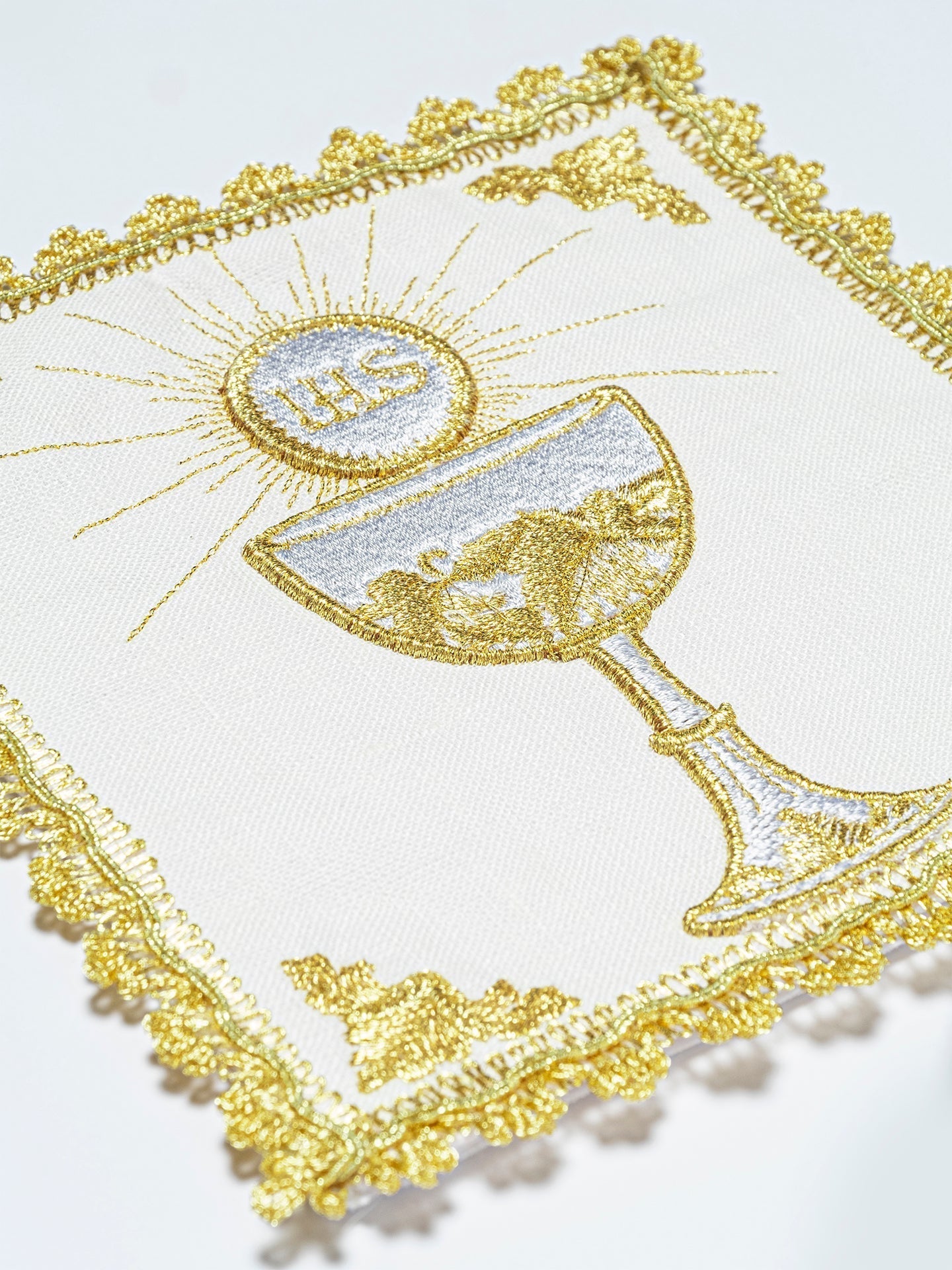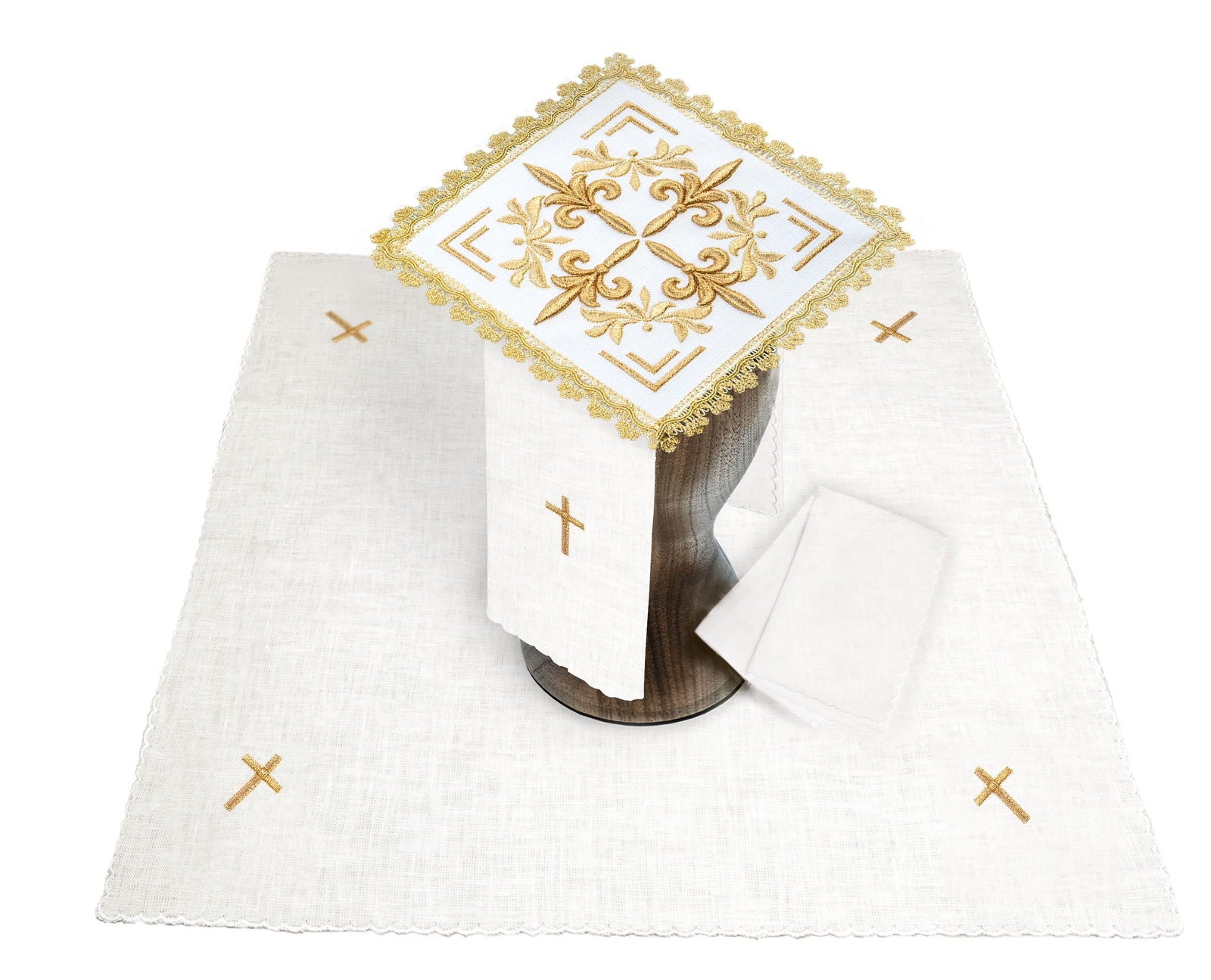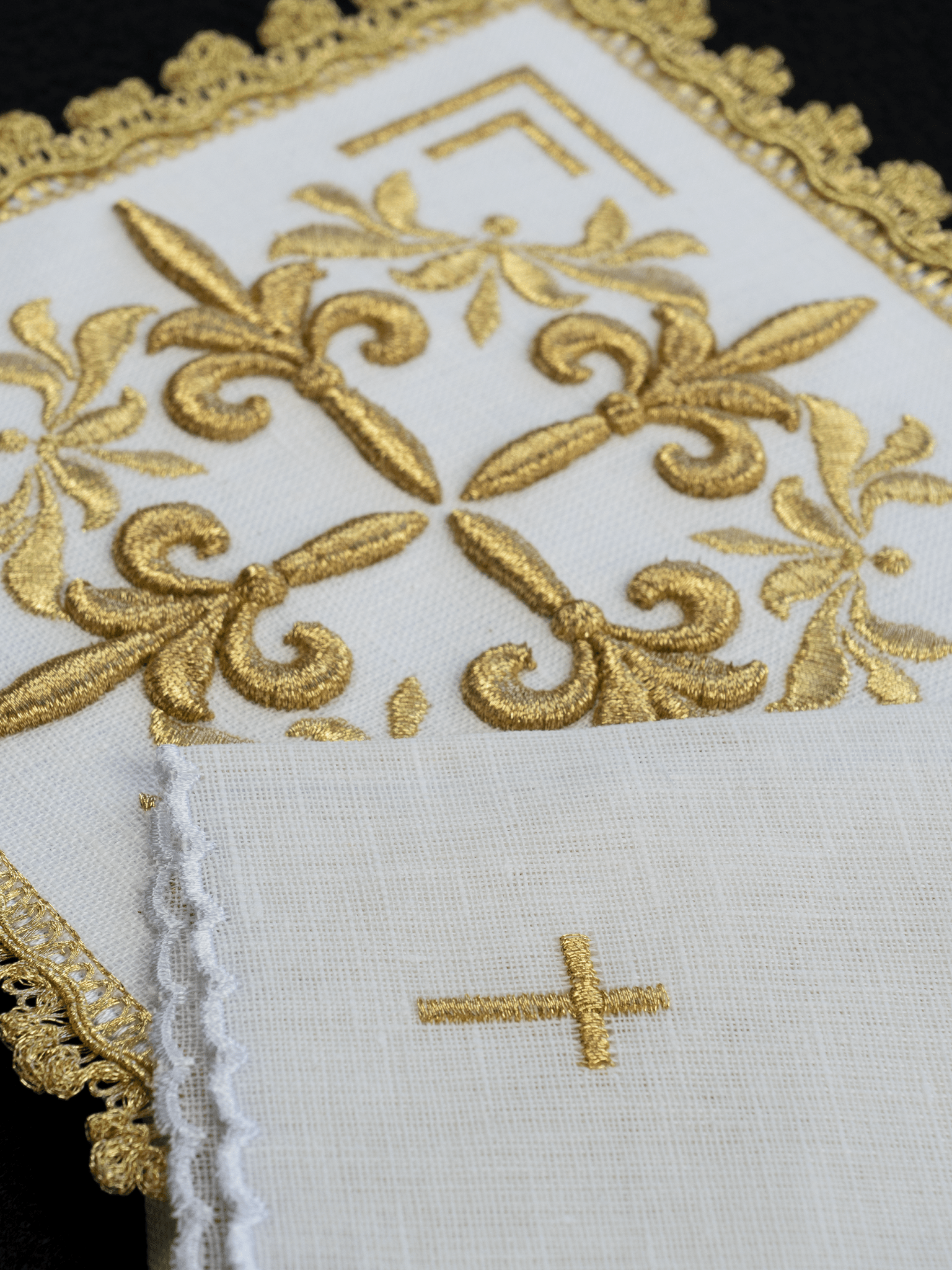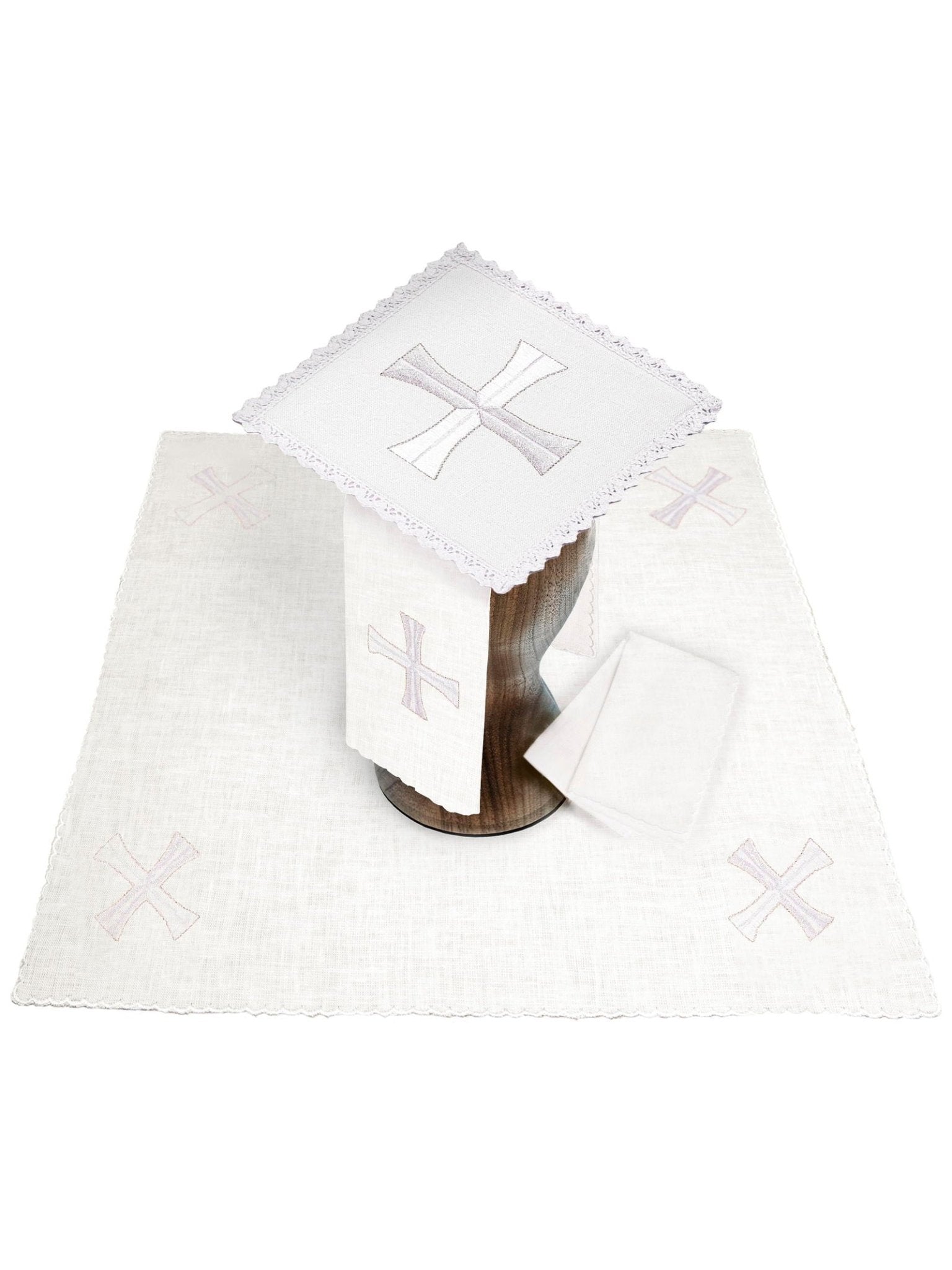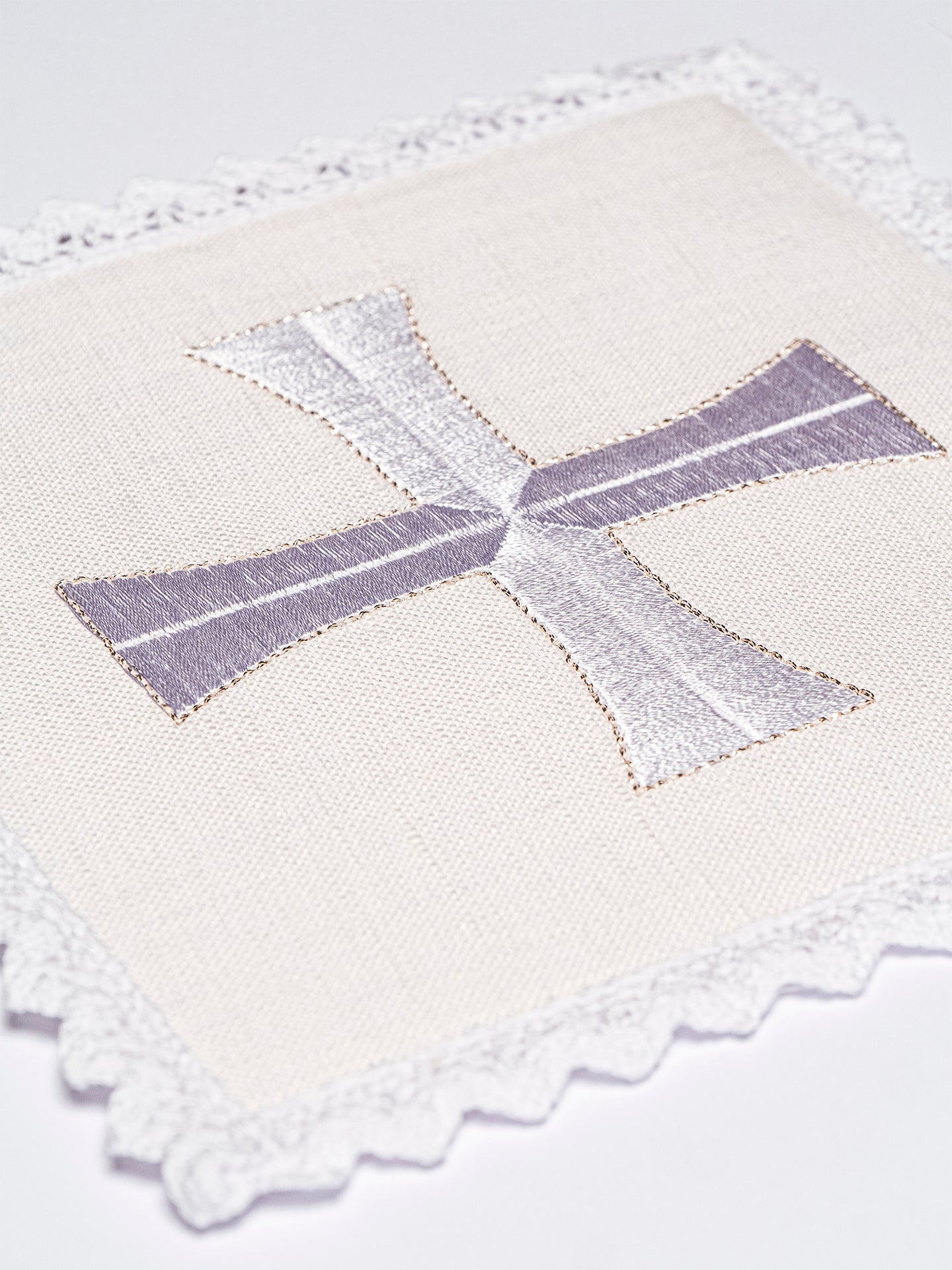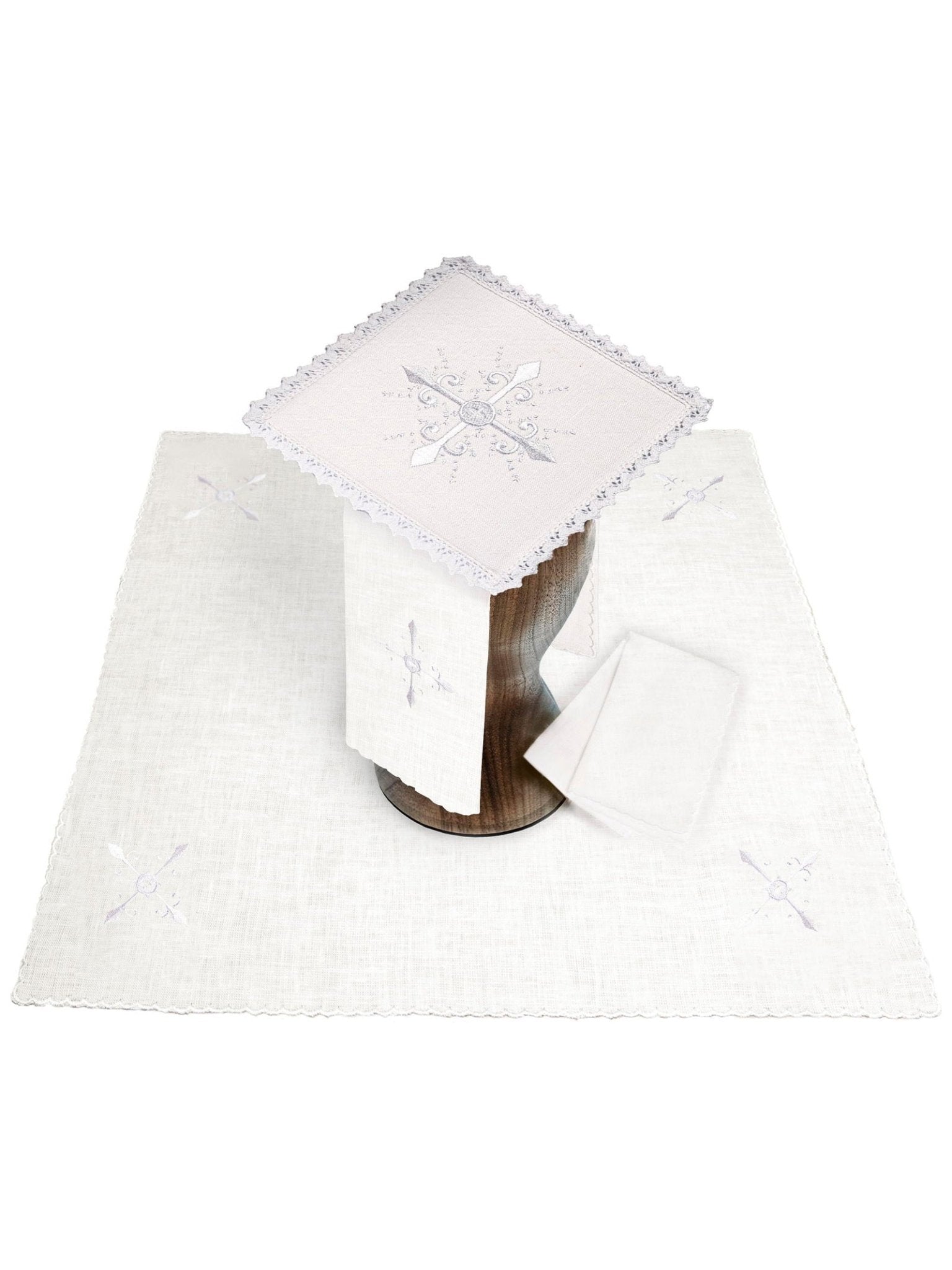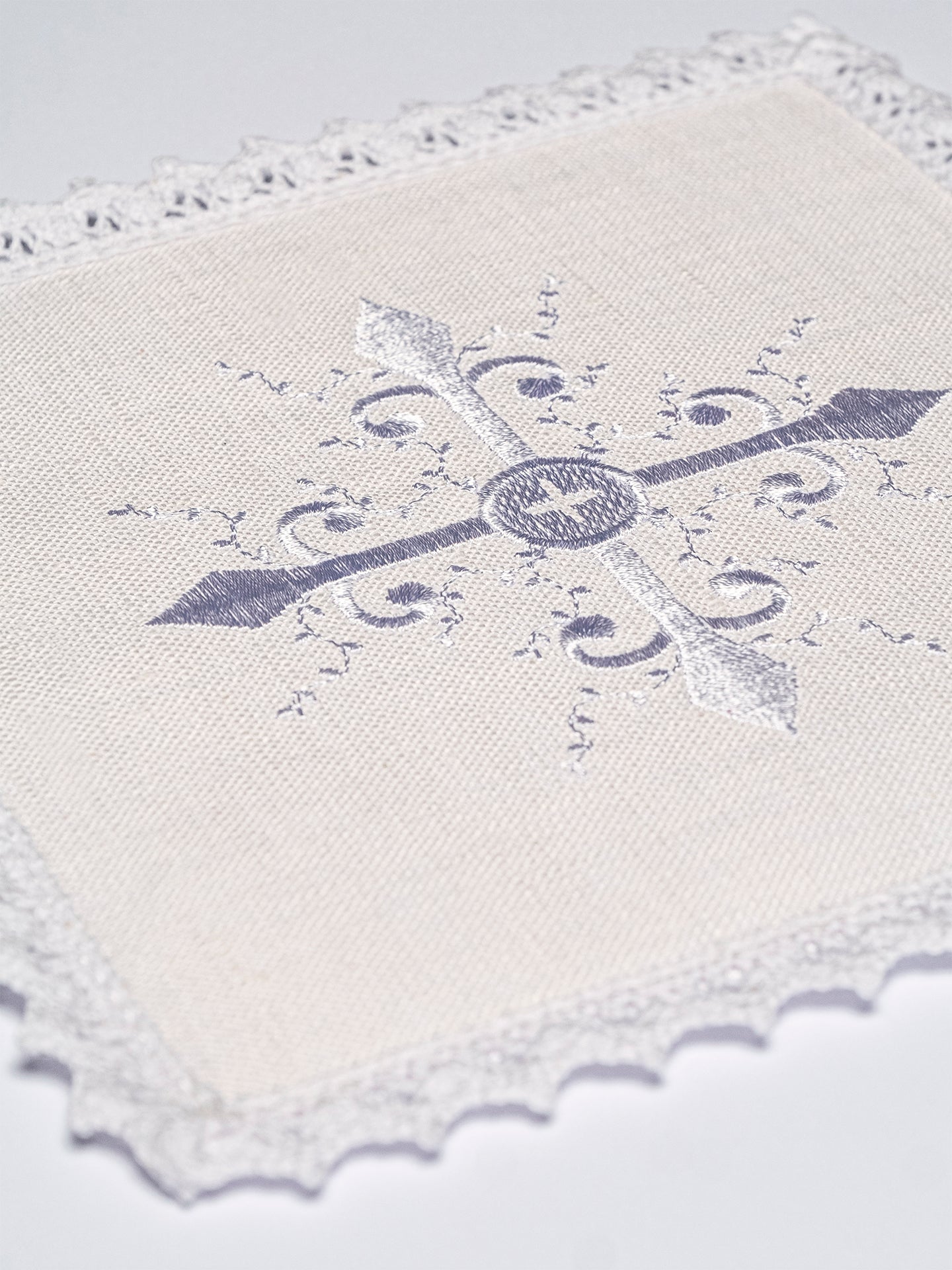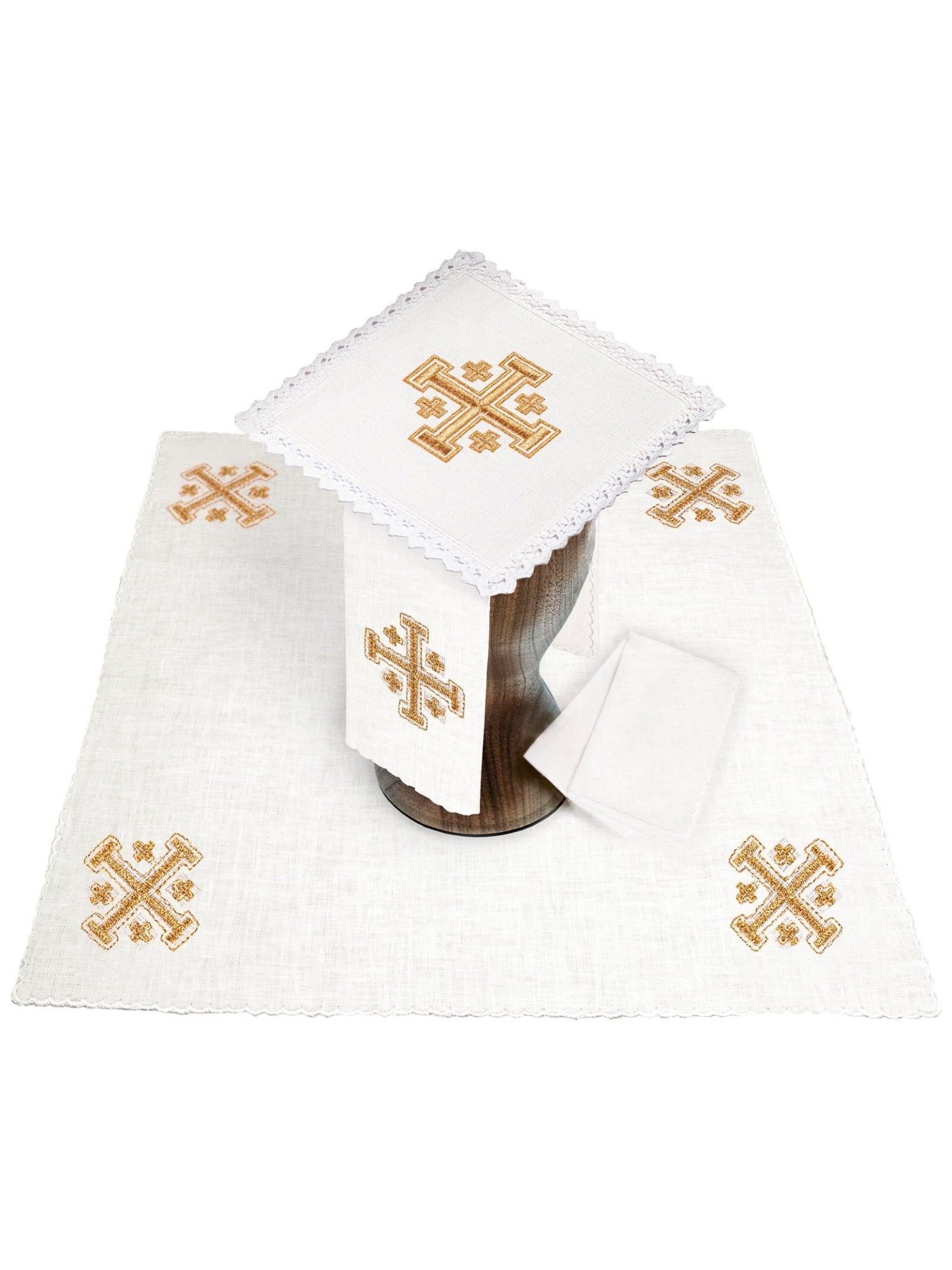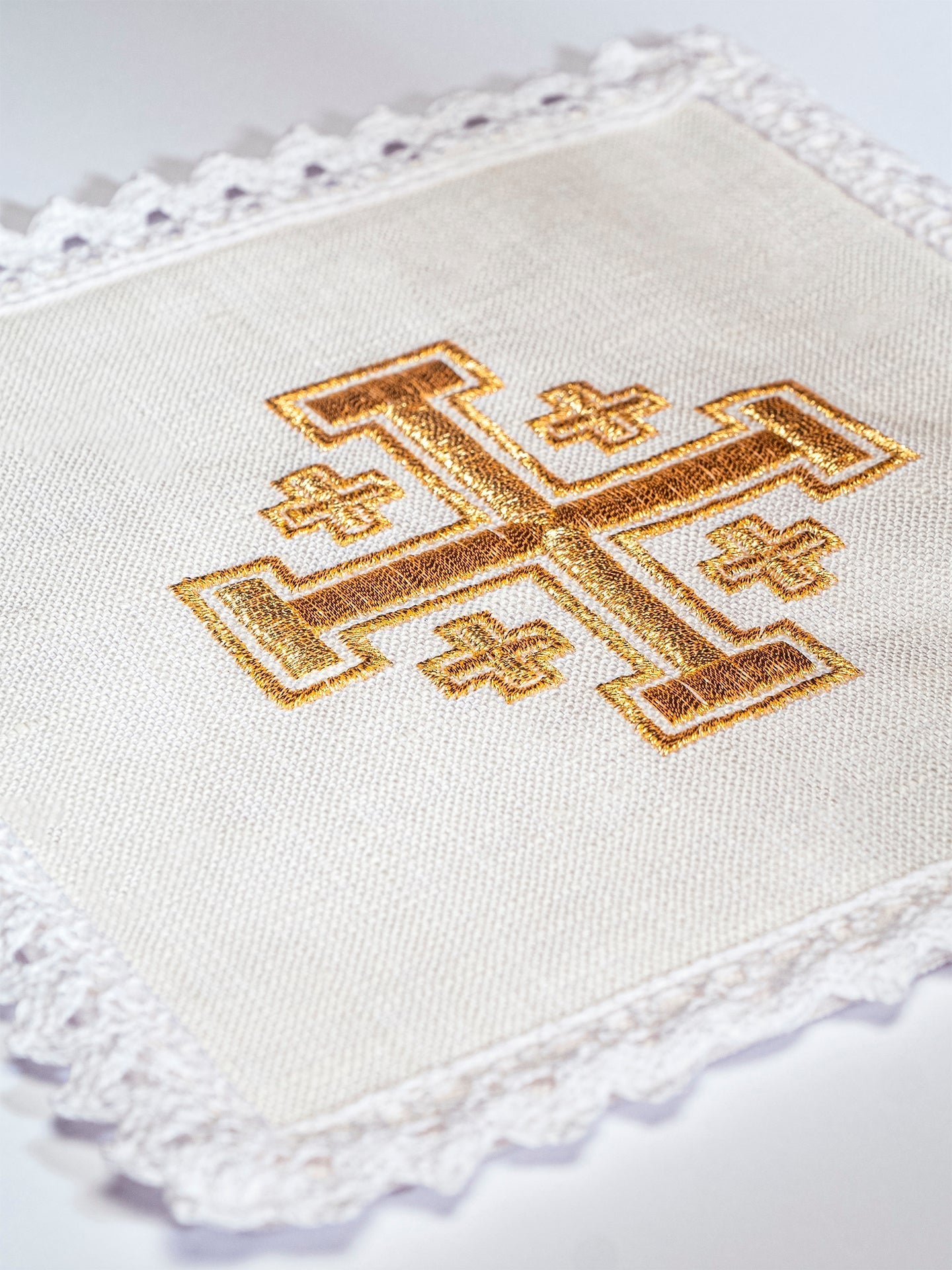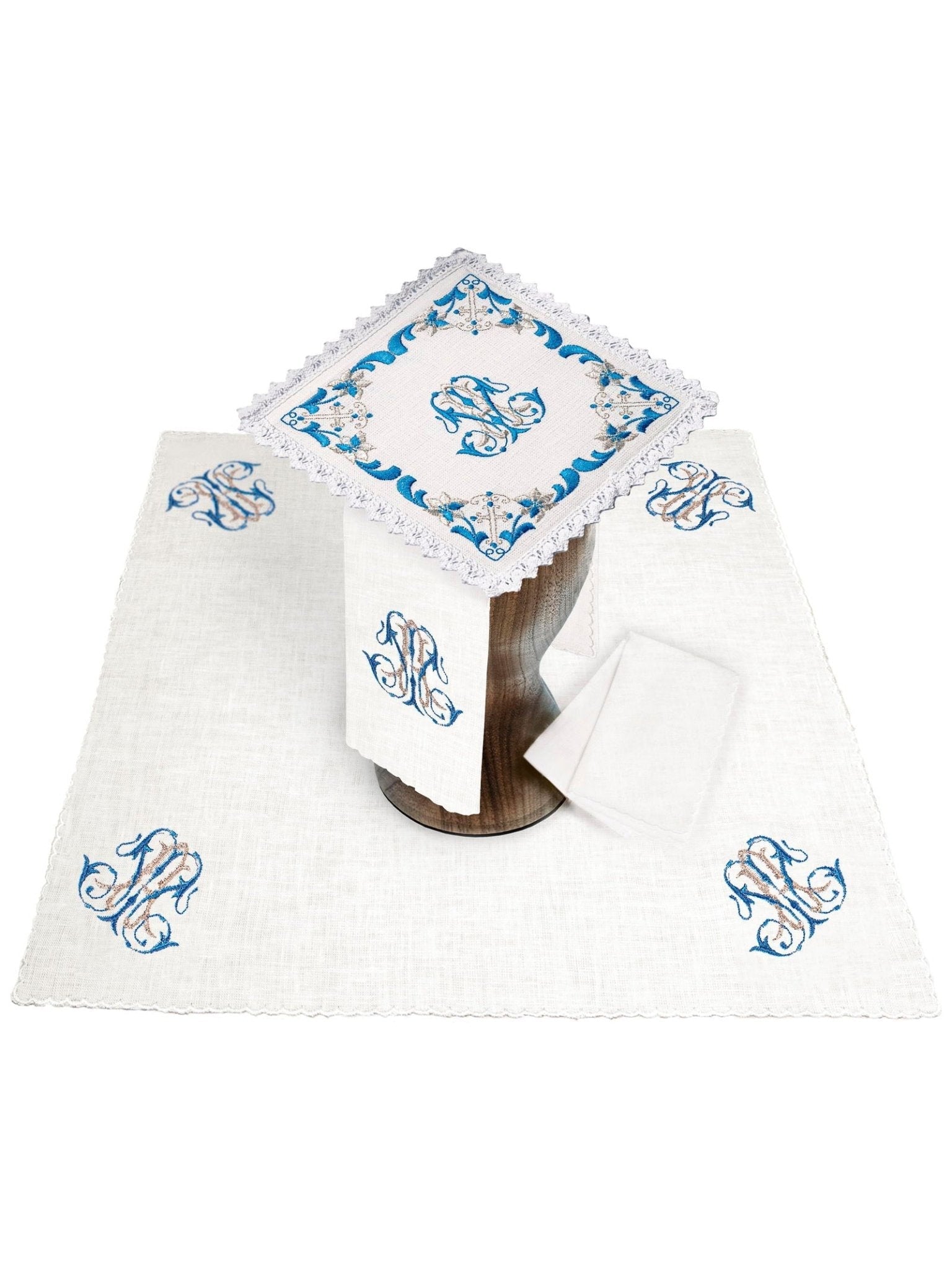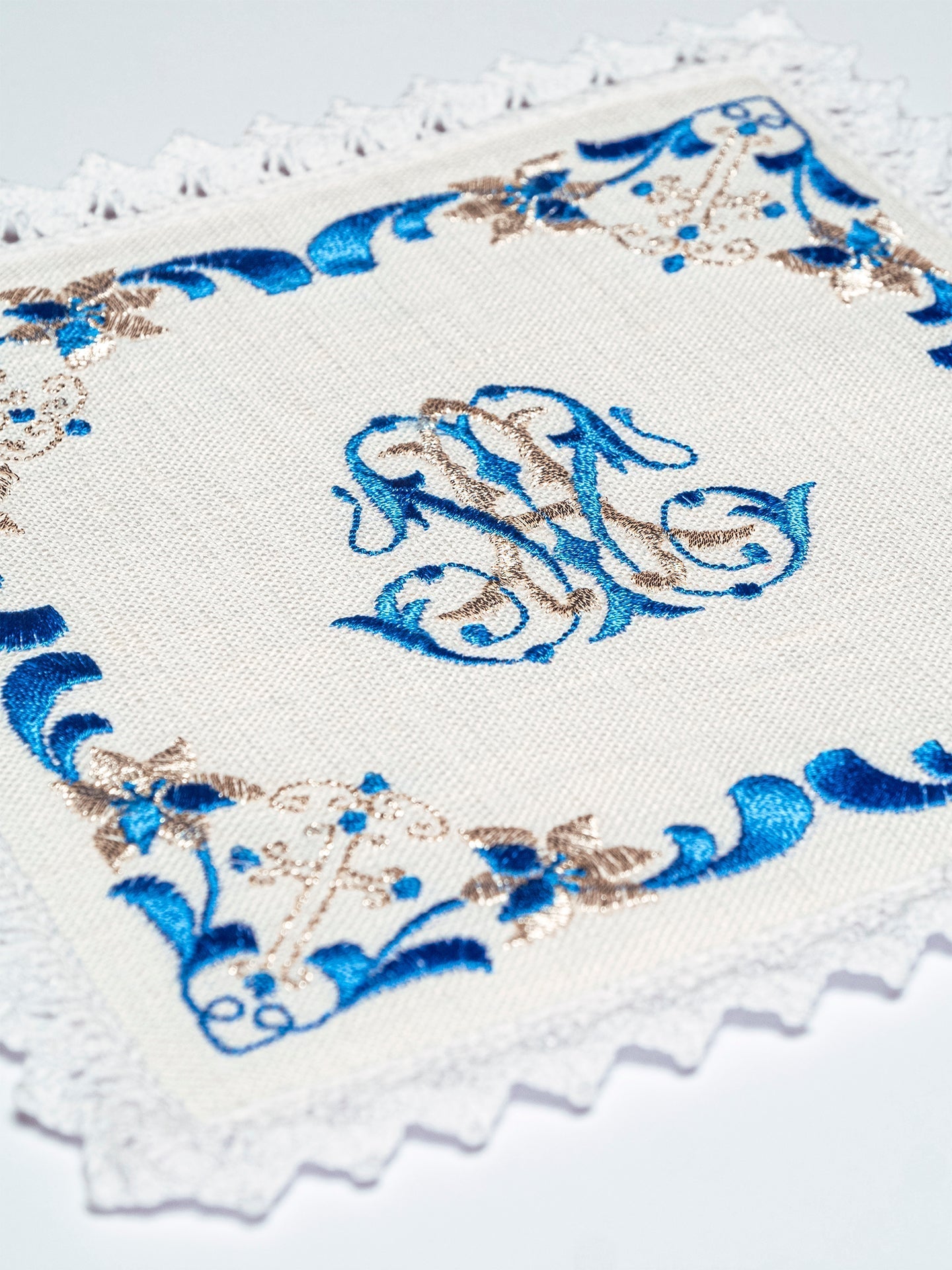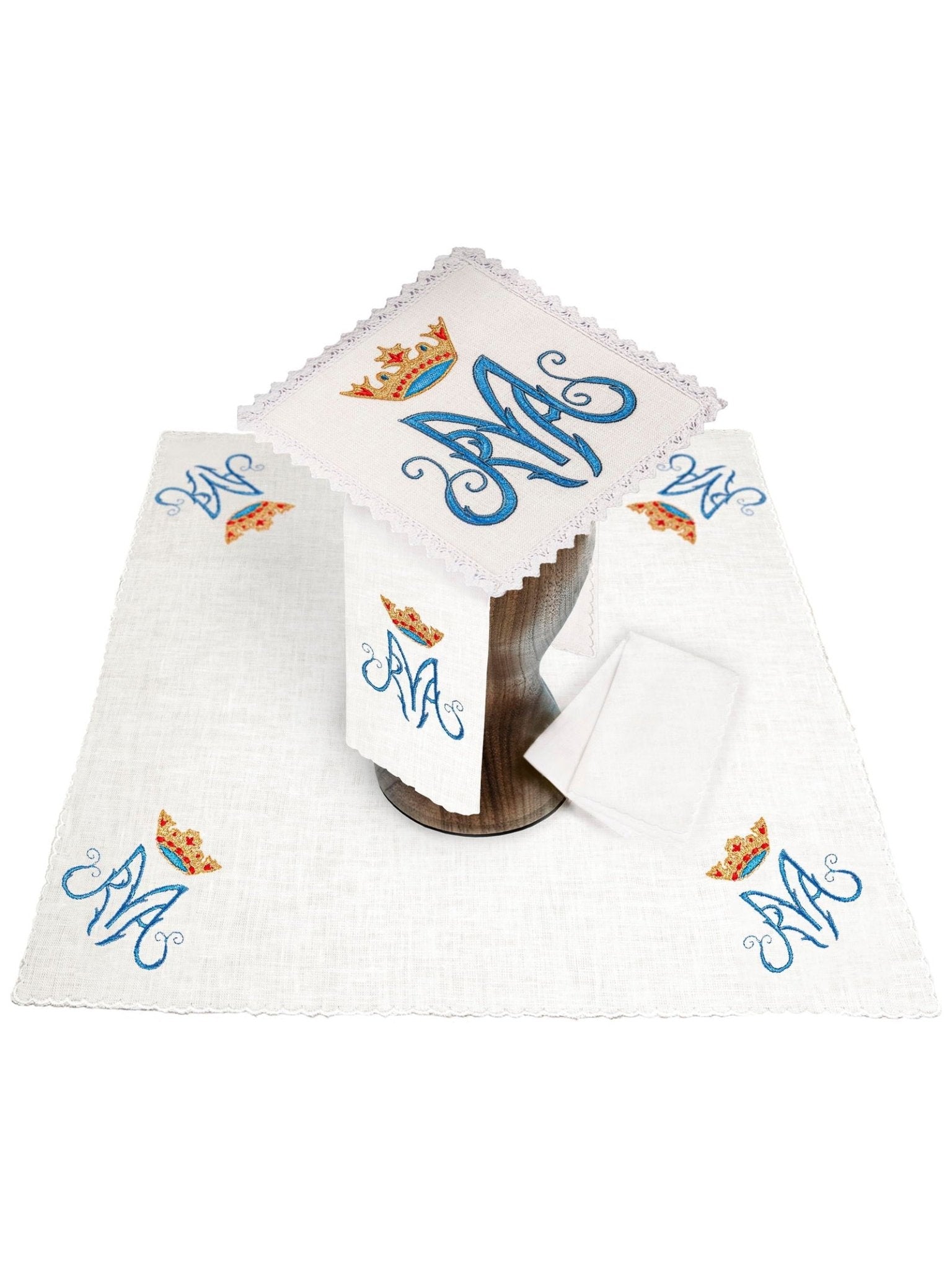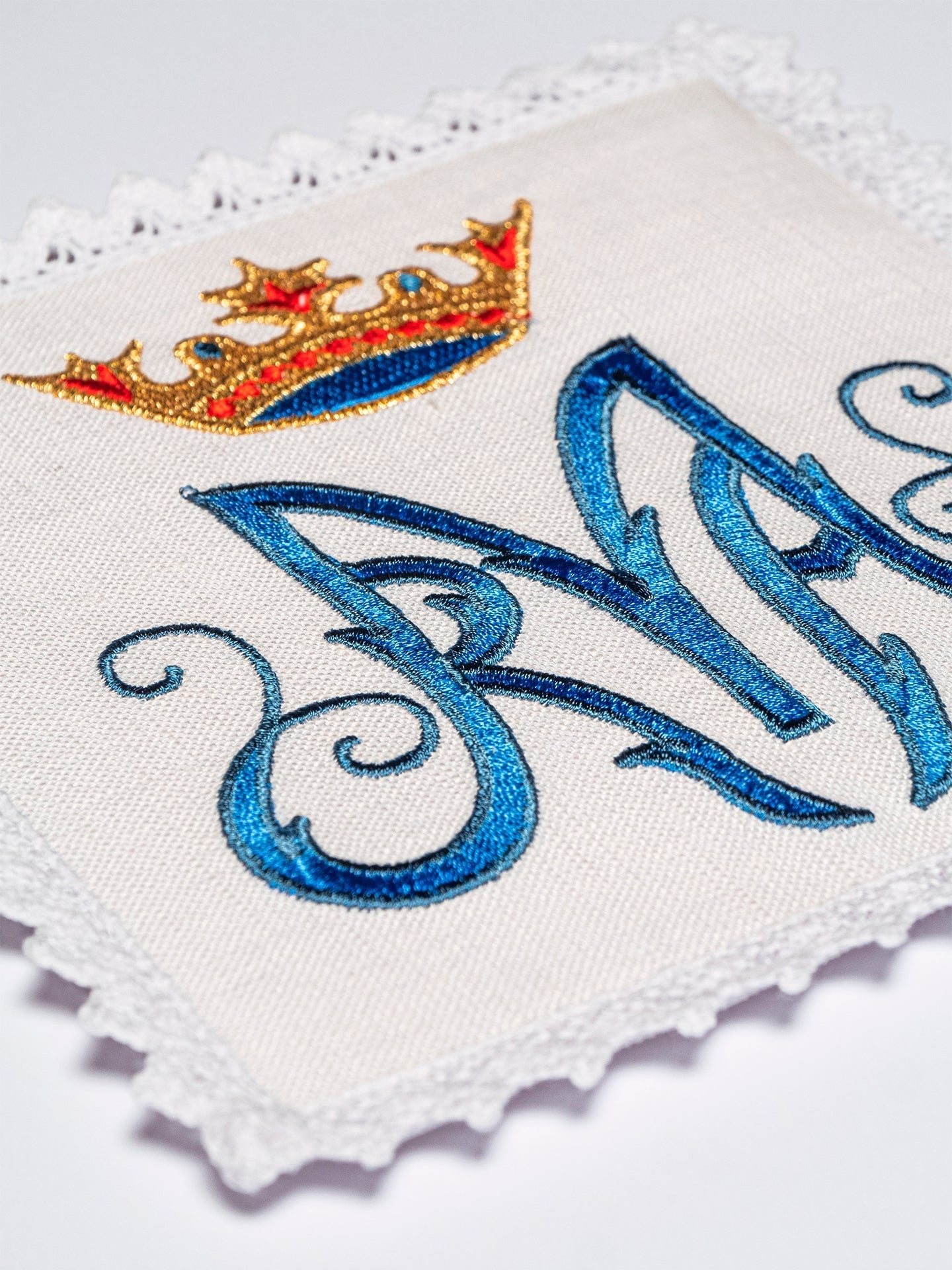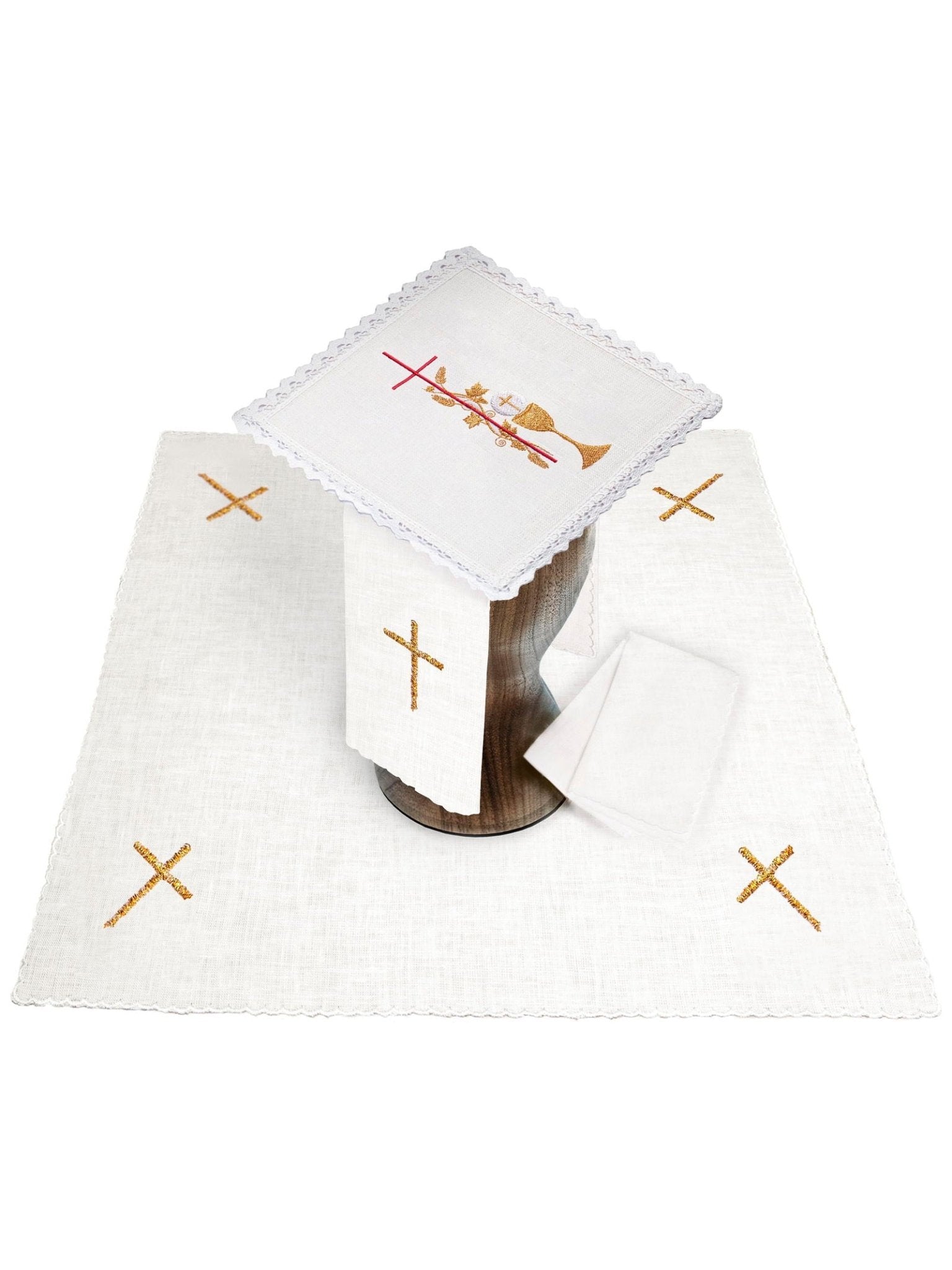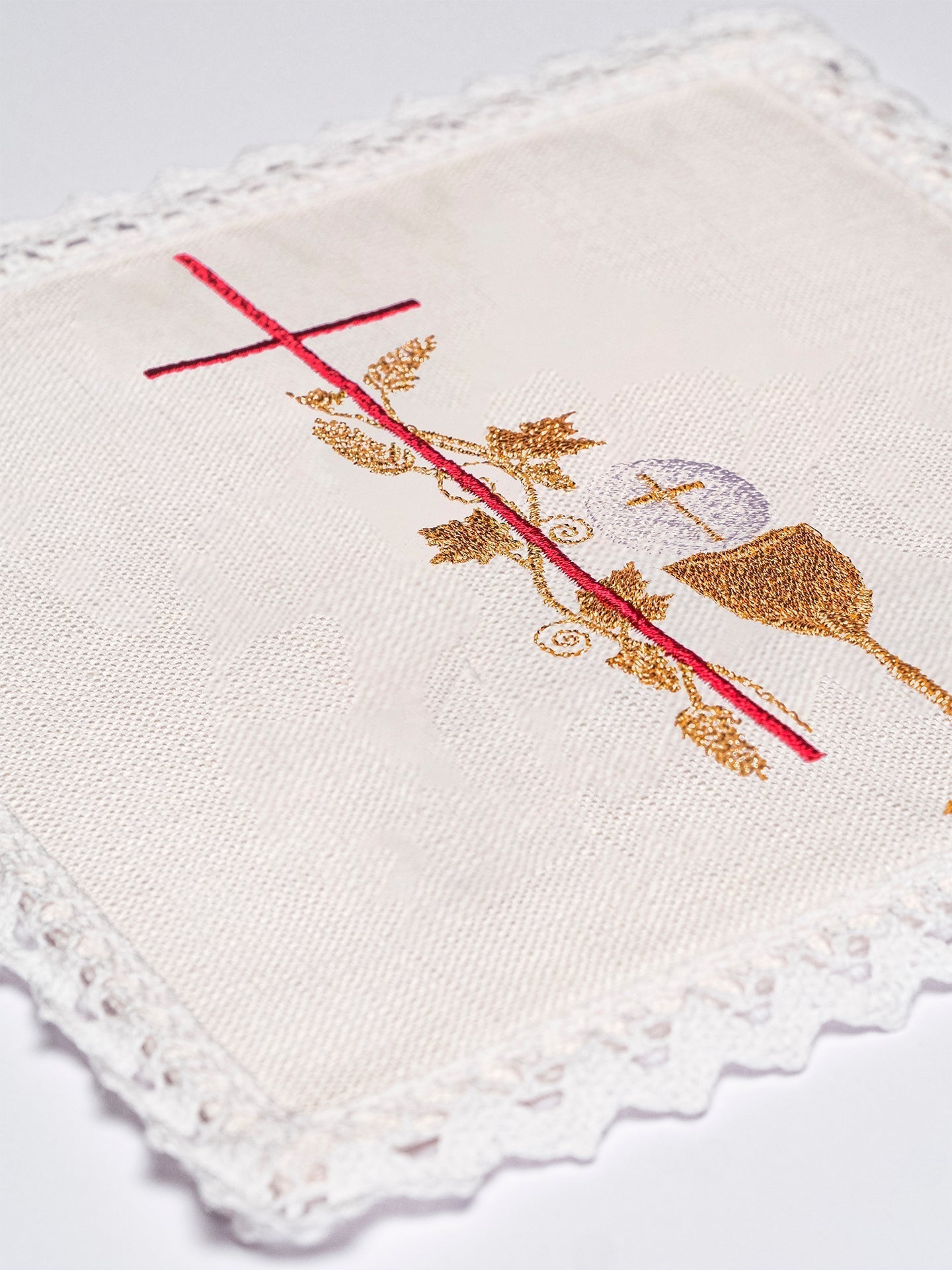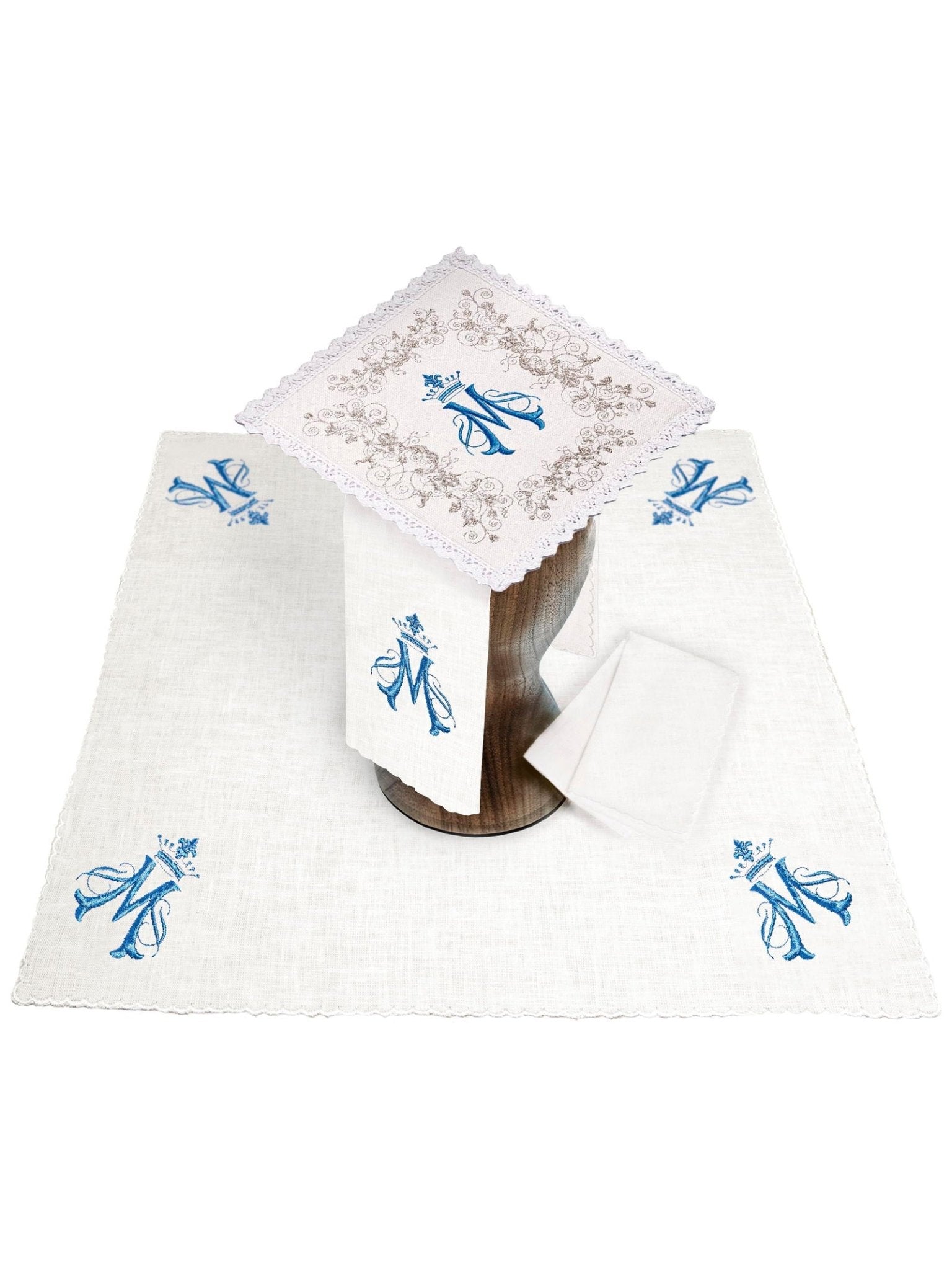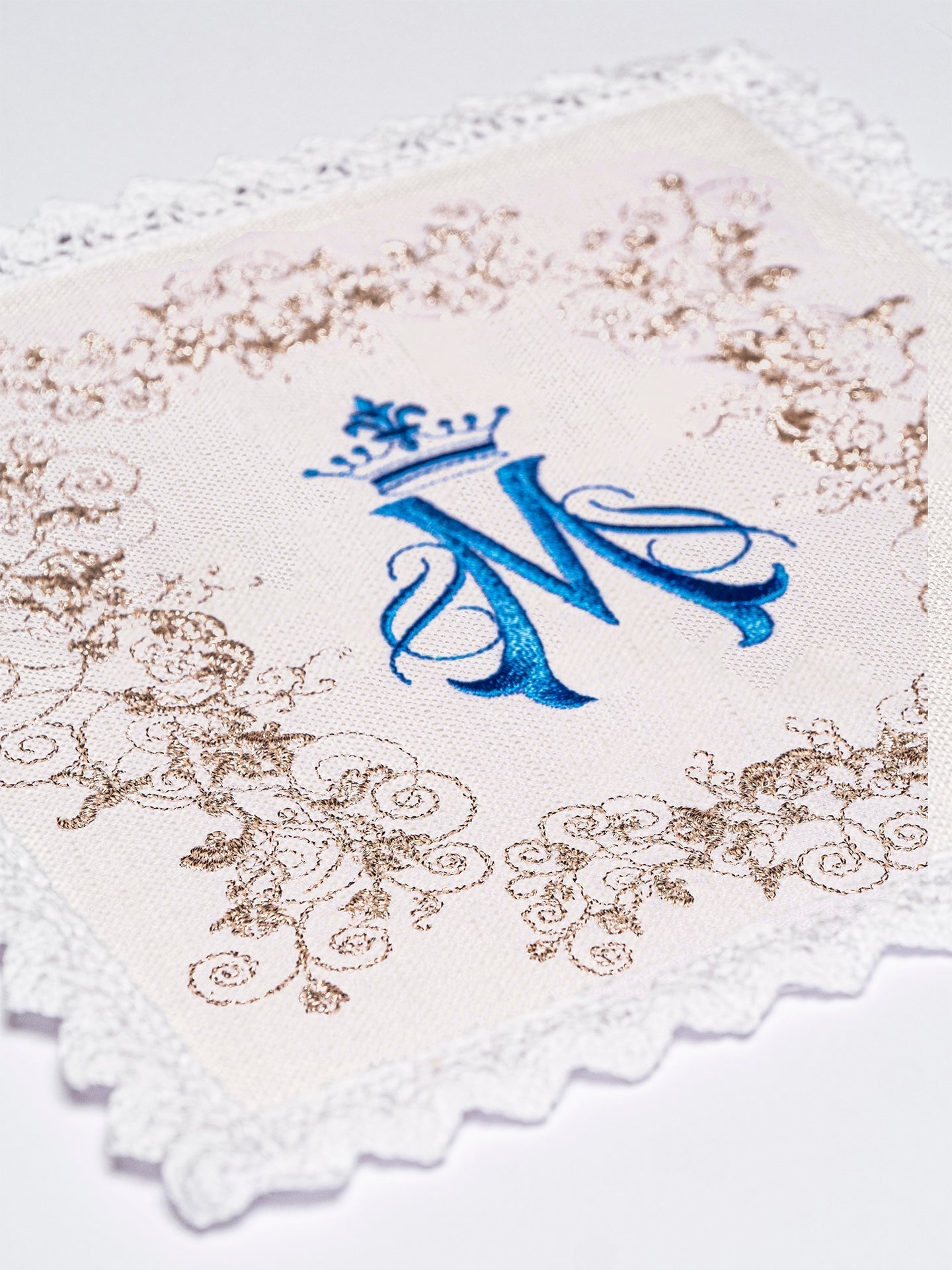Chalice Linens: Enhancing the Sacred Liturgy
Understanding the Significance of Chalice Linens
Chalice linens, integral to the celebration of the Eucharist in Christian liturgy, are much more than simple cloths. They are sacred objects, meticulously crafted and treated with reverence, playing a vital role in the Holy Communion. These linens serve both practical and symbolic purposes, contributing to the solemnity and dignity of the Mass.
Historically, the use of chalice linens dates back to the early Church. As the liturgy evolved, so did the materials and designs of these sacred cloths. Today, they continue to be essential components of the altar setting, reflecting the sanctity of the Eucharist and the profound mystery of Christ's sacrifice.
The Four Essential Chalice Linens
There are four primary types of chalice linens, each with a specific function and name:
The Purificator
The purificator is a rectangular piece of linen, typically white, used to cleanse the chalice and paten after Communion. It is also used to dry the priest's fingers after washing them during the liturgy. The purificator symbolizes the cleansing of sins and the purity required to approach the Eucharist.
The Pall
The pall is a stiff, square-shaped cover, usually made of linen and often embroidered with a cross or other religious symbol. It is placed over the chalice to protect the consecrated wine from dust, insects, or other impurities. The pall represents the stone that sealed the tomb of Christ, signifying the sacredness and inviolability of the Eucharist.
The Corporal
The corporal is a large, square linen cloth spread on the altar, upon which the chalice and paten are placed during the consecration. It is the most important of the chalice linens, representing the burial cloth of Christ. Any particles of the host or drops of the Precious Blood that may fall are carefully collected within the corporal's boundaries.
The Lavabo Towel
The lavabo towel, while not directly used on the chalice, is an essential linen used during the lavabo, the ritual washing of the priest's hands. The priest uses this towel to dry his hands after washing them during the liturgy. It symbolizes the purification of the priest before handling the sacred elements.
Materials and Craftsmanship
Traditionally, chalice linens are made from pure linen, a natural fiber known for its absorbency, durability, and symbolic purity. Linen is considered a fitting material for sacred objects due to its historical significance and association with cleanliness and reverence. The craftsmanship involved in creating these linens often includes intricate embroidery, delicate lacework, and meticulous attention to detail.
The choice of linen reflects a commitment to quality and tradition, ensuring that these sacred cloths are worthy of their purpose. The texture and appearance of linen also contribute to the overall aesthetic of the altar setting, enhancing the visual beauty of the liturgy.
Symbolism and Significance in the Liturgy
Each chalice linen carries profound symbolic meaning, enriching the liturgical experience for both the clergy and the congregation. The white color of the linens symbolizes purity, innocence, and the divine light of Christ. The act of using these linens during the Mass is a reminder of the sacredness of the Eucharist and the reverence due to the Body and Blood of Christ.
The careful handling and treatment of chalice linens underscore their importance as instruments of the liturgy. They are not merely functional objects but rather tangible symbols of faith, tradition, and the enduring mystery of the Eucharist.
Proper Care and Maintenance of Chalice Linens
Given their sacred nature and frequent use, chalice linens require special care and maintenance. Proper washing, ironing, and storage are essential to preserve their quality and ensure their longevity. The guidelines for caring for these linens often include specific instructions from the diocese or religious order.
Generally, chalice linens should be washed separately from other laundry, using a mild detergent and warm water. Stains, particularly those from wine, should be treated promptly to prevent them from setting. After washing, the linens should be carefully ironed to remove wrinkles and maintain their crisp, clean appearance.
Storage is also crucial. Chalice linens should be stored in a clean, dry place, away from dust and direct sunlight. Some parishes use special linen chests or cabinets to protect these sacred cloths when they are not in use.
The Role of Chalice Linens in Different Christian Traditions
While the use of chalice linens is common across many Christian denominations, specific practices and traditions may vary. In the Roman Catholic Church, the guidelines for chalice linens are clearly defined and regulated by liturgical norms. Other Christian traditions, such as Anglican, Lutheran, and Orthodox churches, also use chalice linens, though the specific designs, materials, and customs may differ.
Despite these variations, the underlying purpose remains the same: to honor the Eucharist and enhance the sacredness of the liturgical celebration. Chalice linens serve as a common thread, connecting Christians across different traditions in their shared reverence for the Body and Blood of Christ.
Choosing the Right Chalice Linens for Your Church
Selecting the appropriate chalice linens for your church involves considering several factors, including the liturgical calendar, the style of the church, and the preferences of the clergy. The quality of the materials, the craftsmanship, and the symbolic designs are all important considerations.
Many churches opt for simple, elegant linens that reflect the purity and solemnity of the Eucharist. Others choose more ornate linens, adorned with intricate embroidery and rich colors, to enhance the visual splendor of the liturgy. Ultimately, the choice of chalice linens should be guided by a desire to honor God and enrich the worship experience for the entire congregation.
Purchasing Chalice Linens: Quality and Value
When purchasing chalice linens, it is essential to prioritize quality and value. Look for reputable suppliers who use high-quality materials and employ skilled artisans. Consider the durability of the linens and their ability to withstand frequent use and washing.
While cost is a factor, it should not be the sole determinant. Investing in high-quality chalice linens is an investment in the beauty and dignity of the liturgy. These sacred cloths will serve your church for many years, enriching the worship experience and honoring the sacred mystery of the Eucharist.
The Future of Chalice Linens: Tradition and Innovation
As the Church continues to evolve, so too will the design and use of chalice linens. While tradition remains important, there is also room for innovation and creativity. Modern designers are exploring new materials, patterns, and techniques to create chalice linens that are both beautiful and functional.
The future of chalice linens lies in finding a balance between honoring the past and embracing the present. By preserving the sacred traditions while also embracing new ideas, we can ensure that these essential liturgical objects continue to enrich the worship experience for generations to come.
Chalice Linens: A Reflection of Faith and Devotion
In conclusion, chalice linens are much more than mere cloths they are tangible symbols of faith, devotion, and the enduring mystery of the Eucharist. Their careful use and maintenance reflect a deep reverence for the Body and Blood of Christ and a commitment to upholding the sacred traditions of the Church. Whether simple or ornate, traditional or modern, chalice linens serve as a powerful reminder of the profound significance of the Mass and the transformative power of the Eucharist.
Exploring Different Styles of Chalice Linens
The world of chalice linens encompasses a variety of styles, each reflecting different liturgical traditions and artistic preferences. From the simple elegance of plain white linen to the intricate beauty of embroidered designs, the options are vast and varied. Understanding the different styles can help you choose the perfect linens to enhance your church's worship experience.
Traditional Chalice Linens
Traditional chalice linens often feature classic designs and materials that have been used for centuries. These linens typically adhere to established liturgical norms and reflect a deep respect for tradition. They are often made from pure linen and may include simple embroidered symbols such as crosses, grapes, or wheat.
Modern Chalice Linens
Modern chalice linens offer a contemporary twist on traditional designs. They may incorporate new materials, patterns, and techniques to create a fresh and innovative look. Modern linens often feature bold colors, abstract designs, and unconventional embroidery styles.
Embroidered Chalice Linens
Embroidered chalice linens are renowned for their intricate beauty and artistic detail. Skilled artisans use a variety of embroidery techniques to create stunning designs that depict religious symbols, biblical scenes, and other sacred imagery. Embroidered linens are often considered works of art and can add a touch of elegance and sophistication to any liturgical setting.
Lace Chalice Linens
Lace chalice linens are characterized by their delicate and intricate lacework. These linens are often handmade and require a high level of skill and craftsmanship. Lace linens can add a touch of romance and refinement to the altar setting and are often used for special occasions such as weddings and feast days.
Seasonal Chalice Linens
Seasonal chalice linens are designed to coordinate with the liturgical calendar. They feature colors and symbols that correspond to different seasons of the year, such as Advent, Christmas, Lent, Easter, and Pentecost. Seasonal linens can help to enhance the liturgical experience and create a visual connection to the rhythms of the Church year.
The Importance of High-Quality Materials
The quality of the materials used to make chalice linens is crucial to their durability, appearance, and overall value. High-quality linens will not only look and feel better but will also withstand frequent use and washing without losing their shape or color. When choosing chalice linens, it is essential to look for materials that are durable, absorbent, and easy to care for.
Pure Linen
Pure linen is the traditional material for chalice linens and is still considered the best option by many. Linen is a natural fiber that is known for its strength, absorbency, and breathability. It is also resistant to mildew and insects, making it an ideal choice for sacred objects that are used frequently.
Cotton
Cotton is another popular material for chalice linens. It is soft, absorbent, and easy to care for. Cotton linens are typically less expensive than linen linens, making them a good option for churches on a budget. However, cotton is not as durable as linen and may require more frequent replacement.
Blends
Some chalice linens are made from blends of linen and cotton or other synthetic fibers. These blends offer a combination of the benefits of both materials, such as the durability of linen and the softness of cotton. Blends can also be more affordable than pure linen linens.
Caring for Different Materials
The care requirements for chalice linens will vary depending on the materials used. Linen linens typically require more care than cotton or blend linens. It is essential to follow the manufacturer's instructions for washing and ironing to ensure that your chalice linens stay in good condition for many years.




